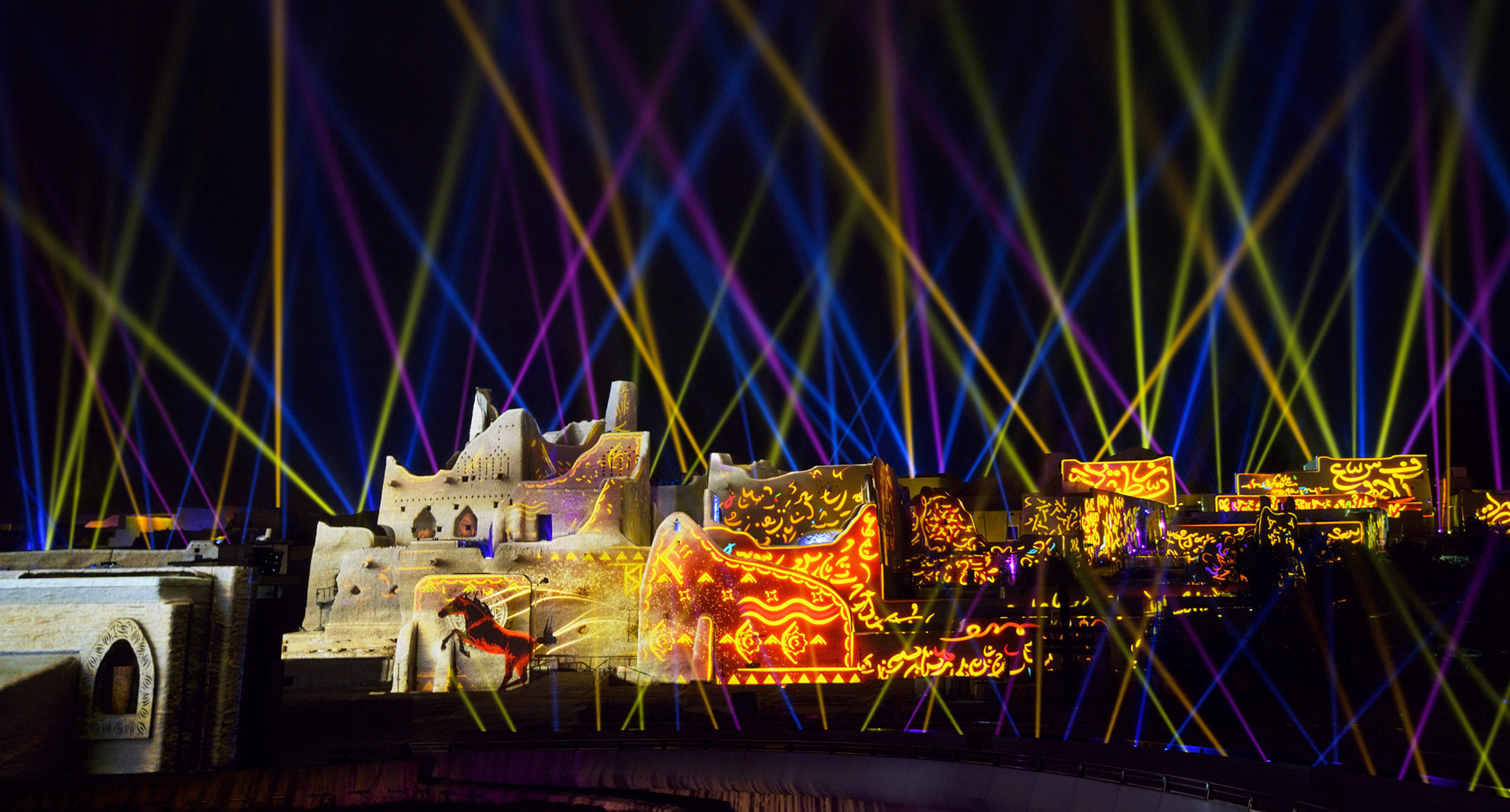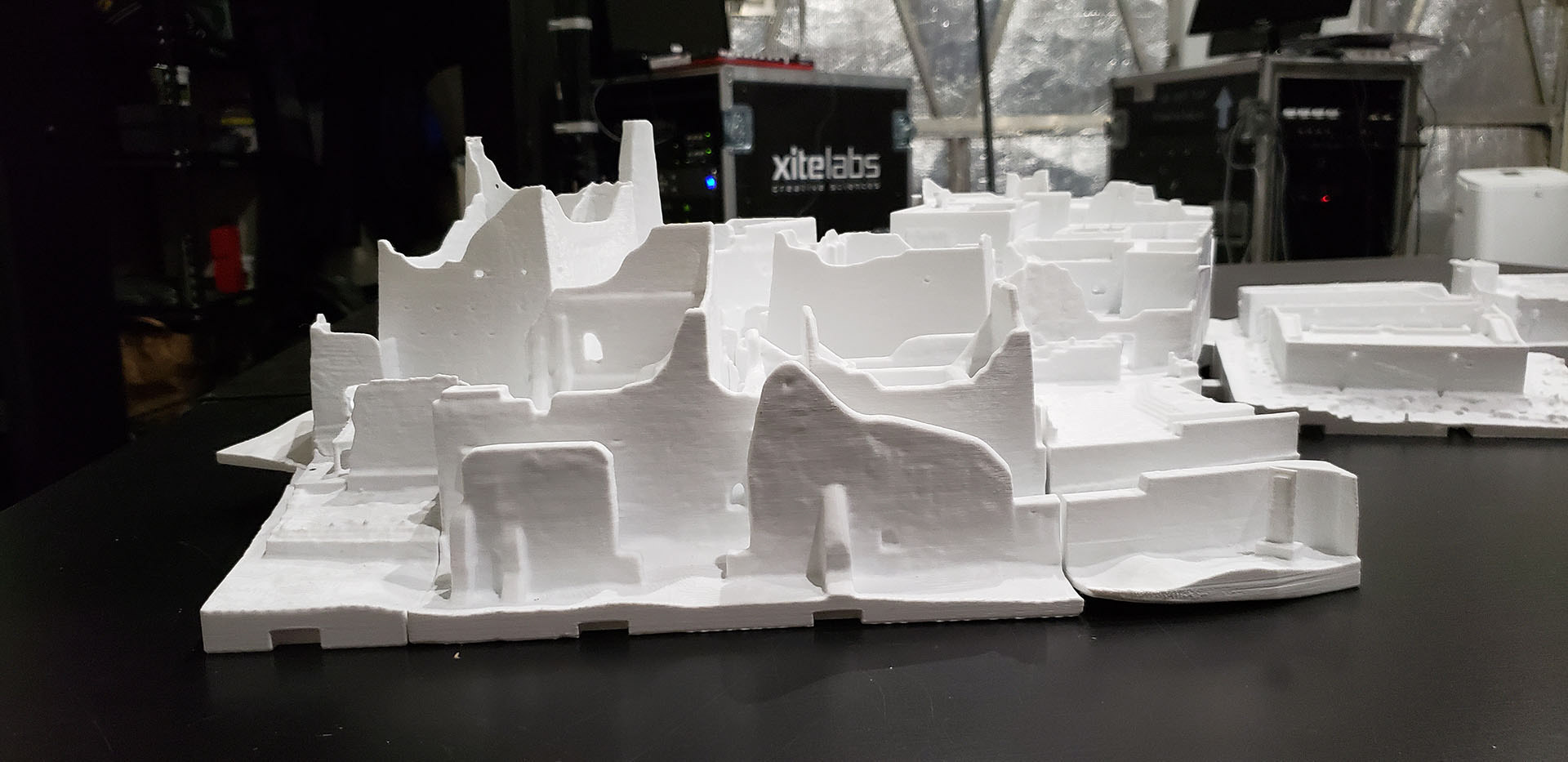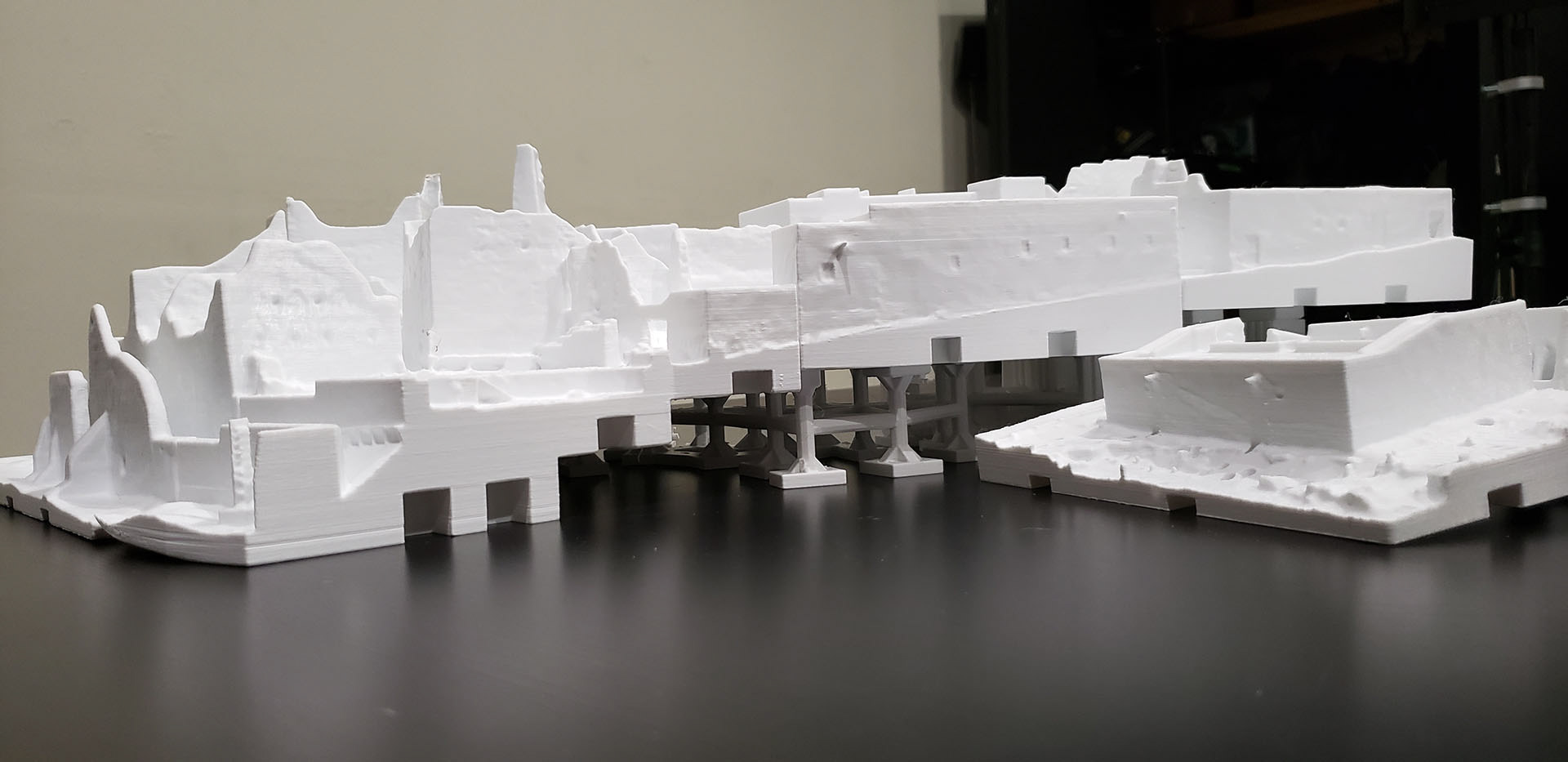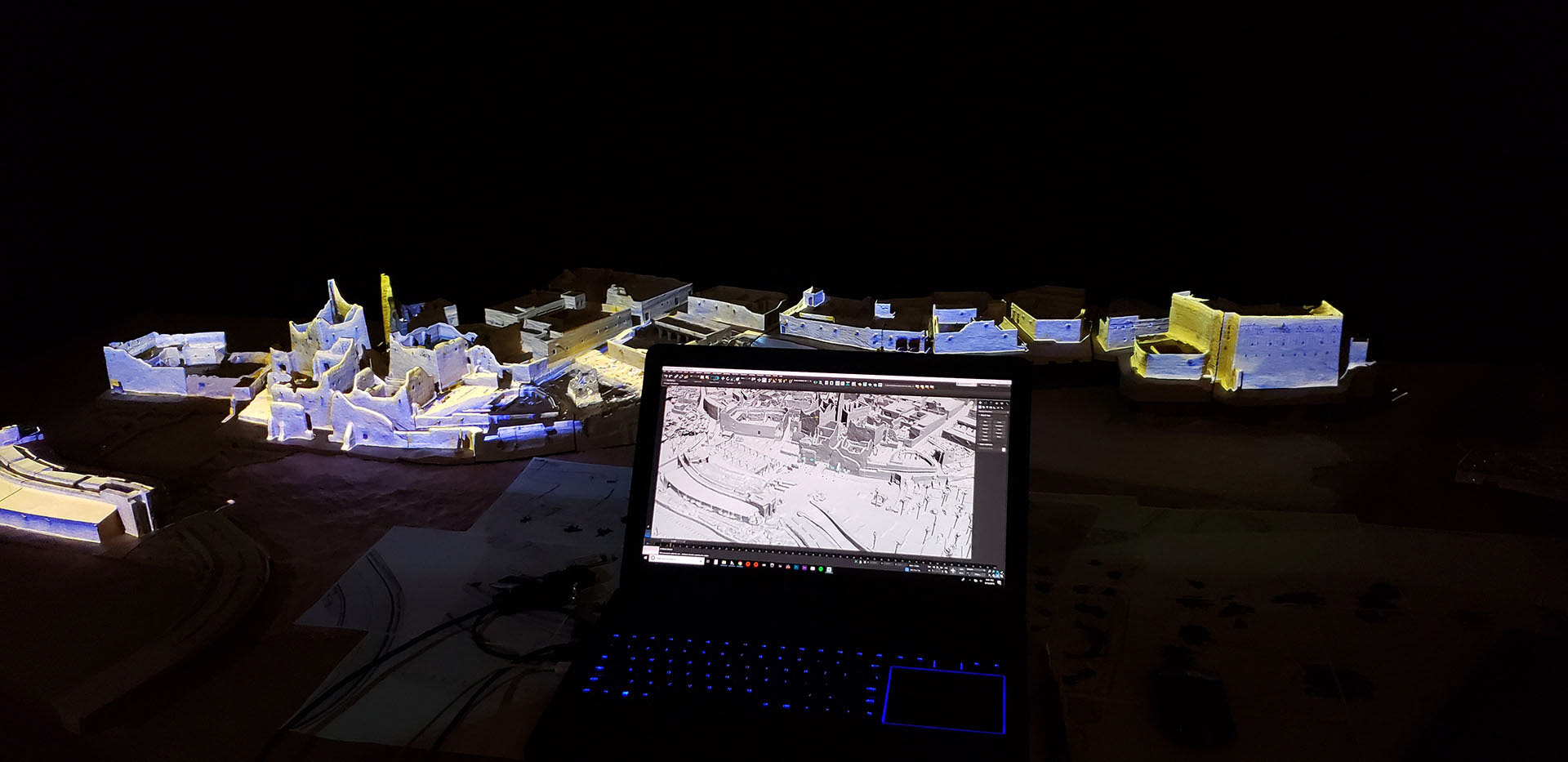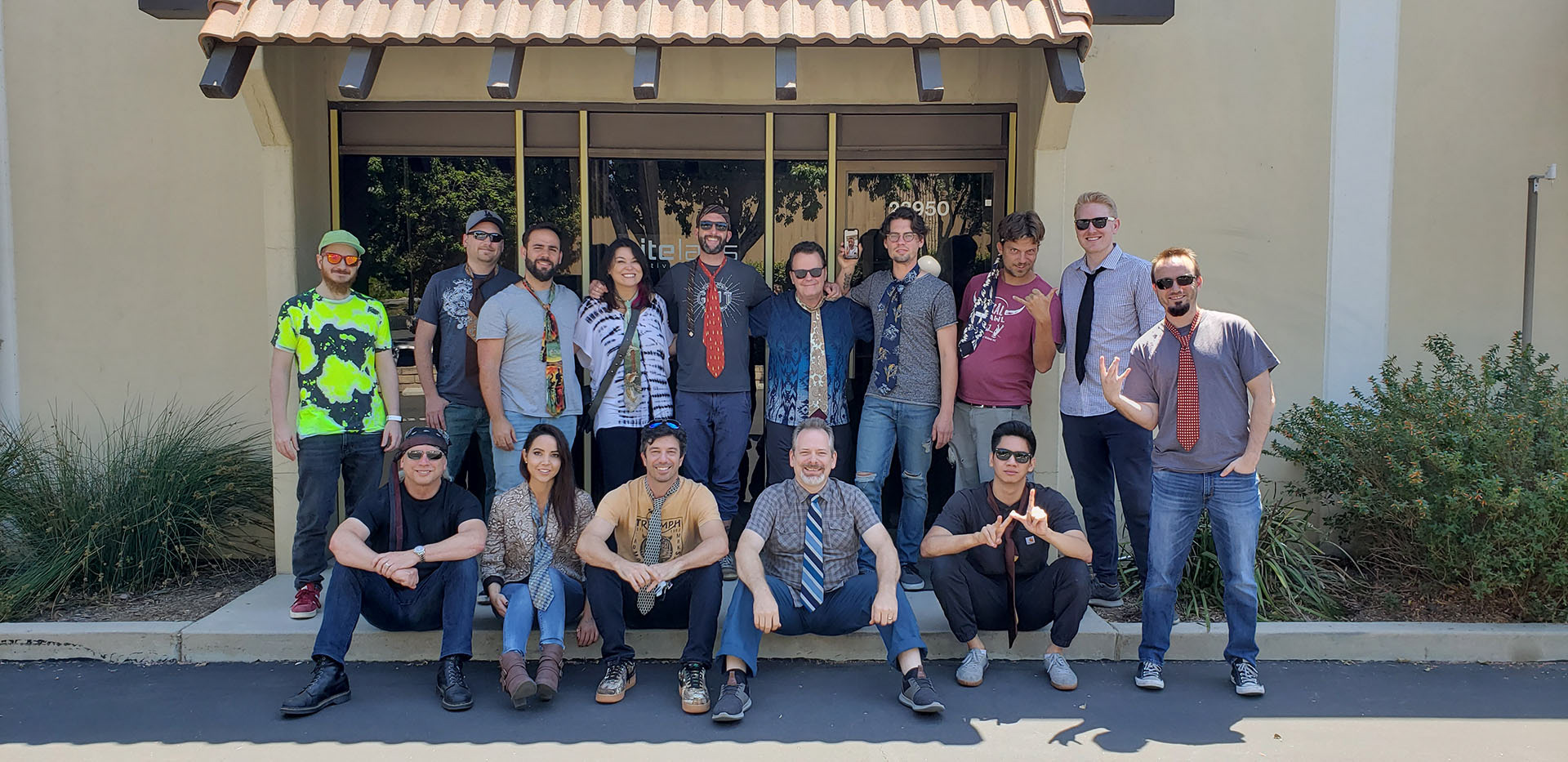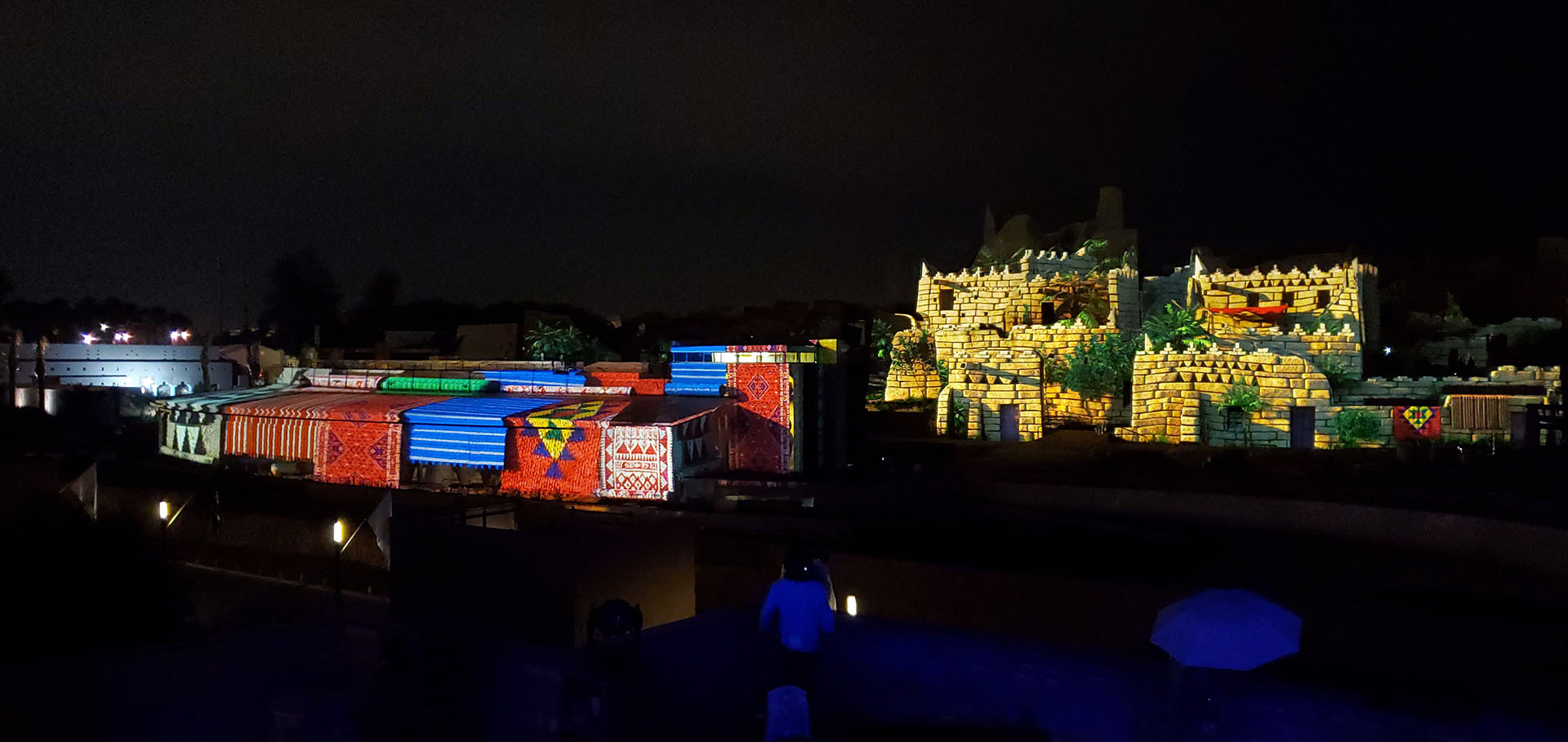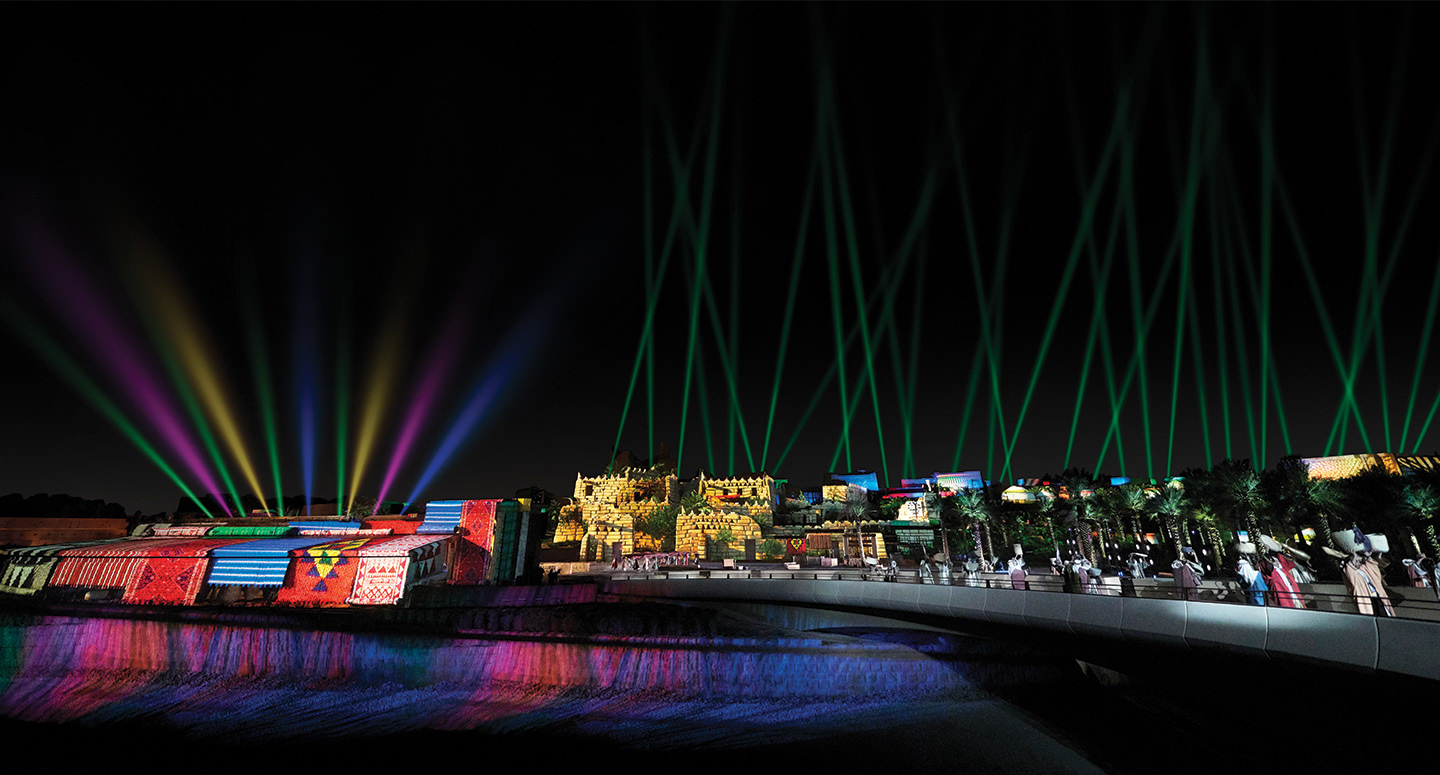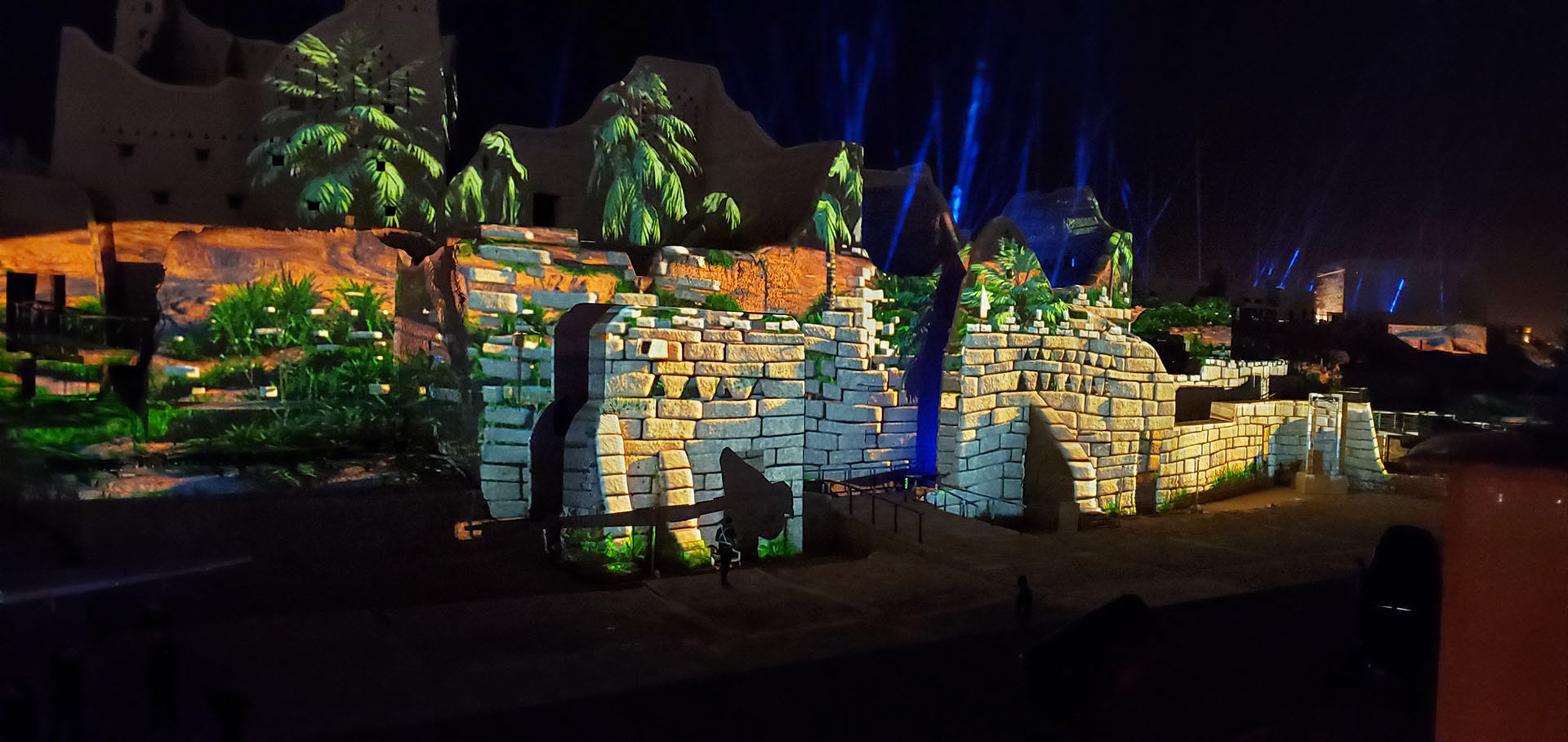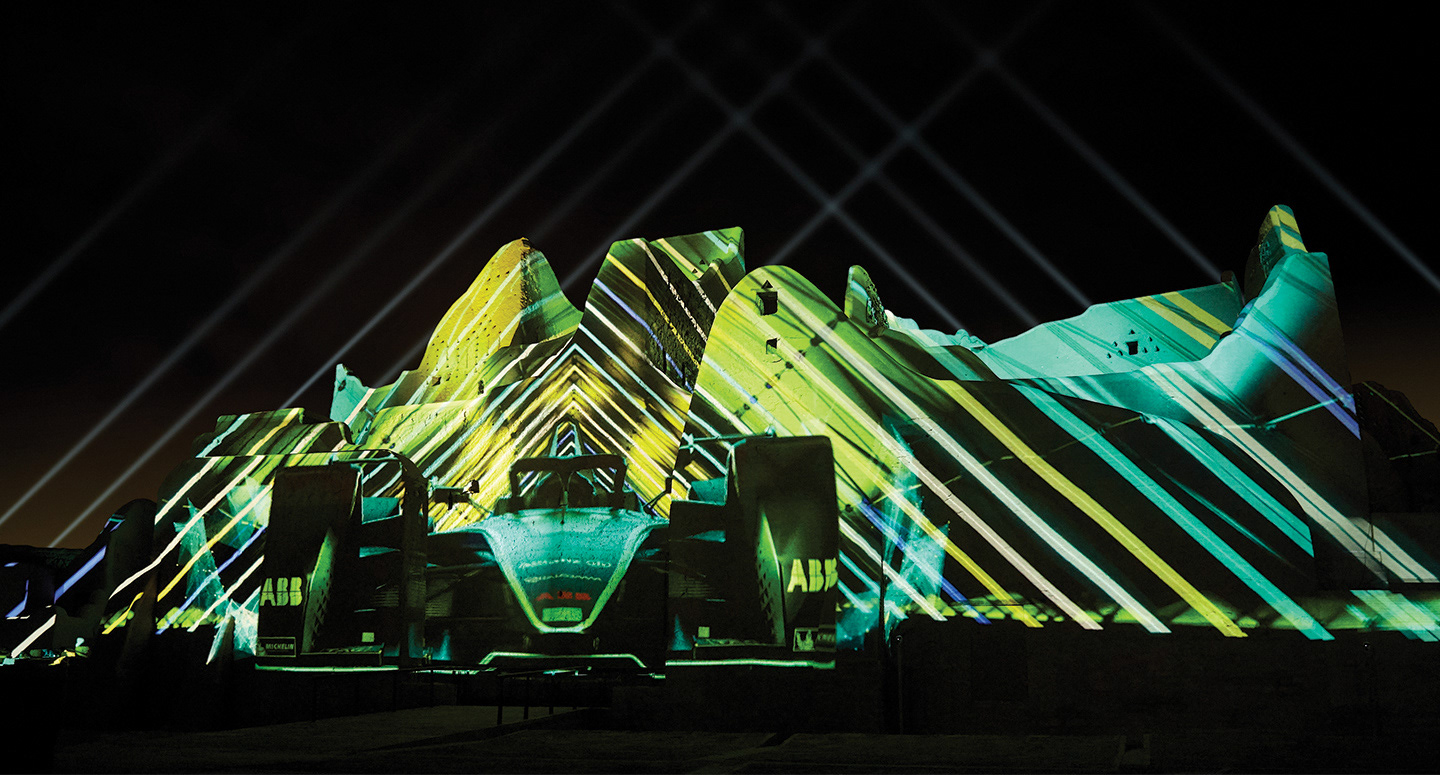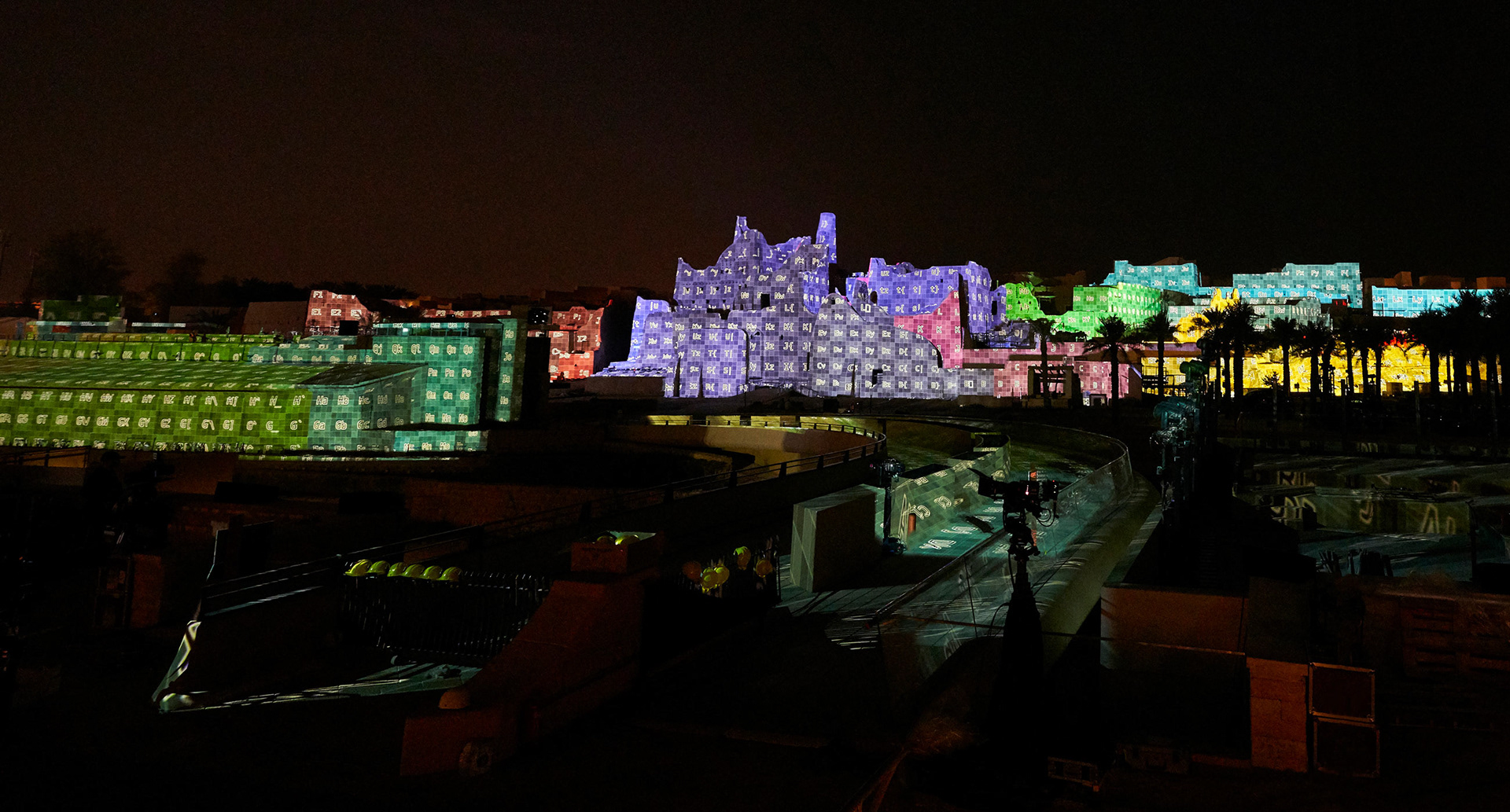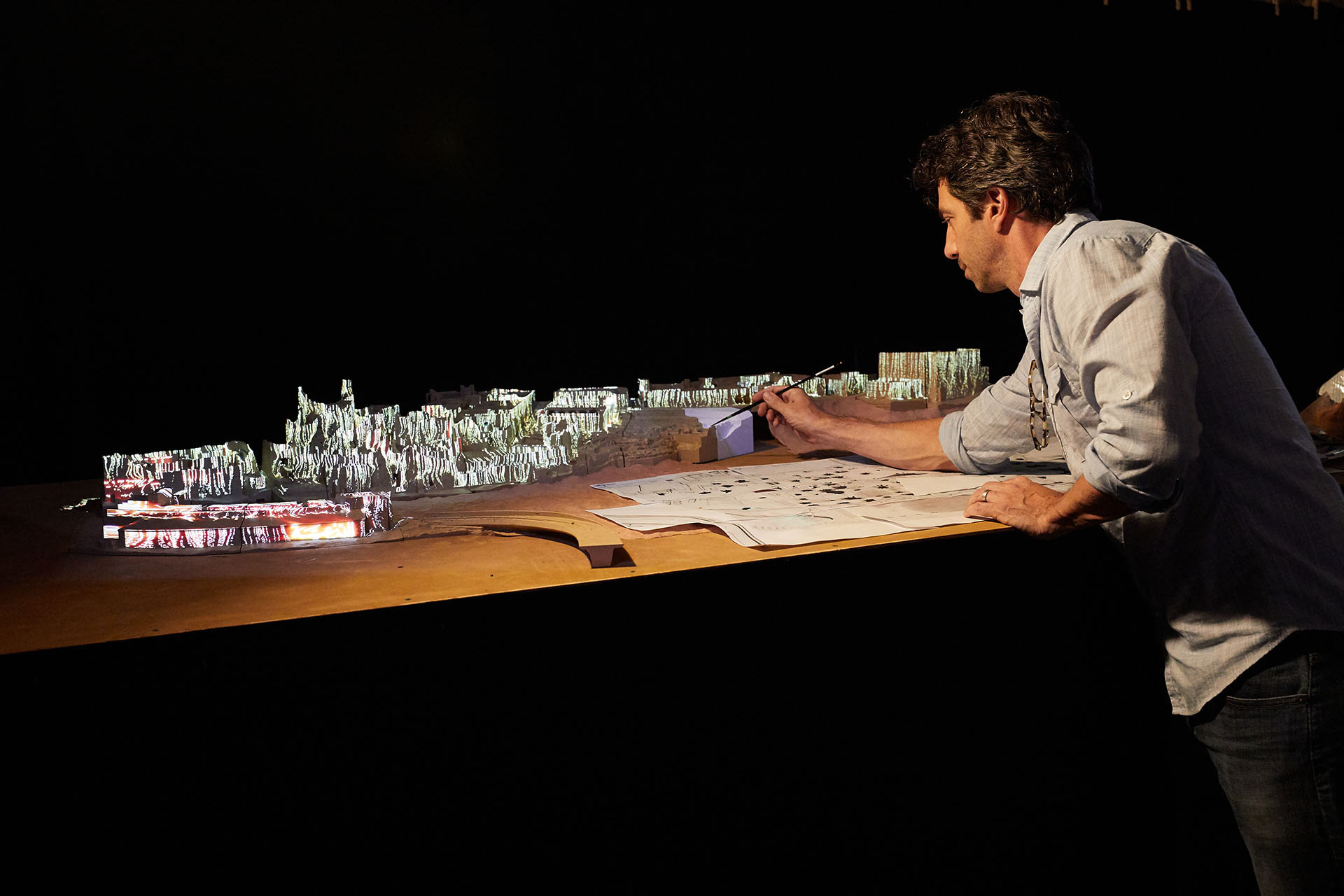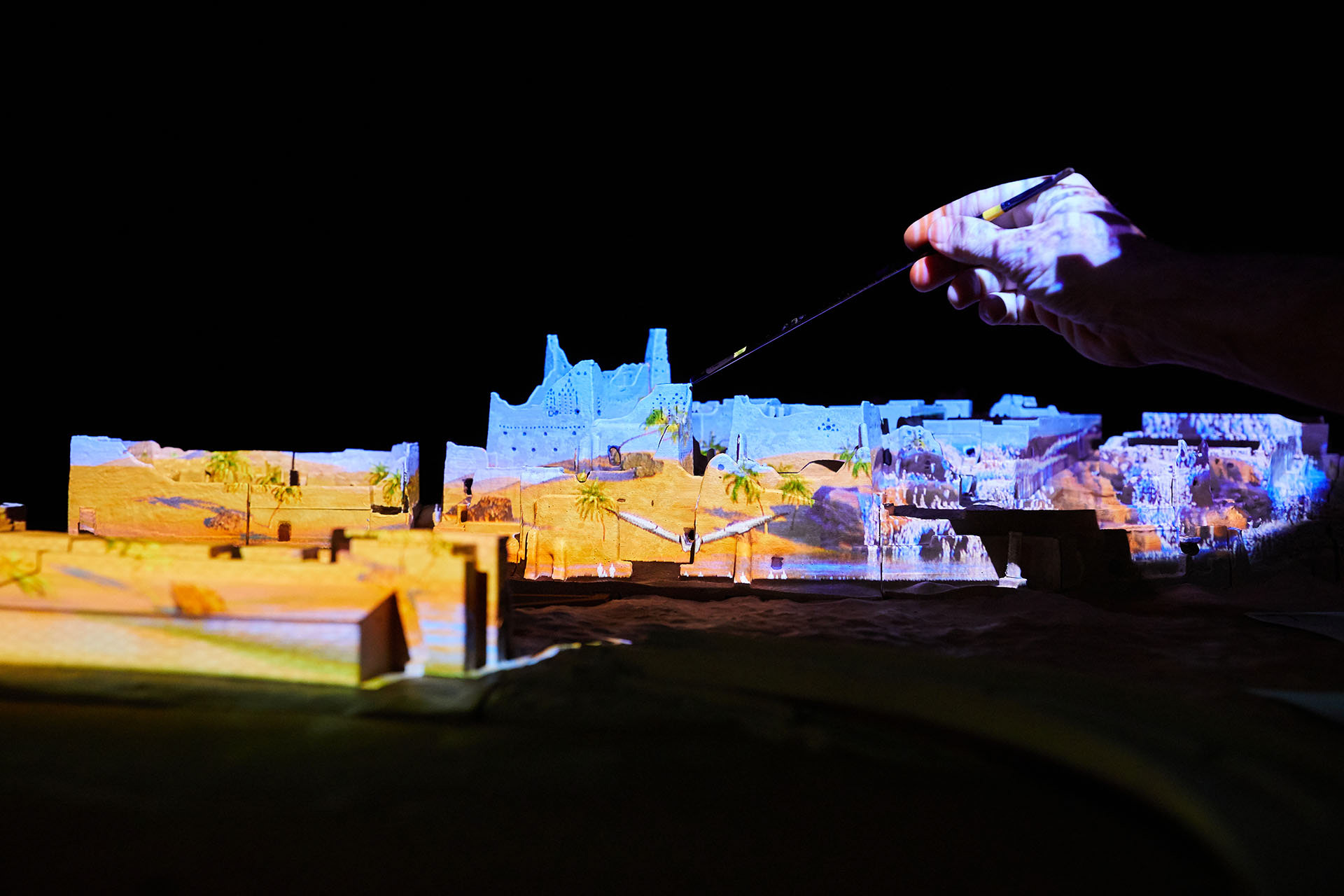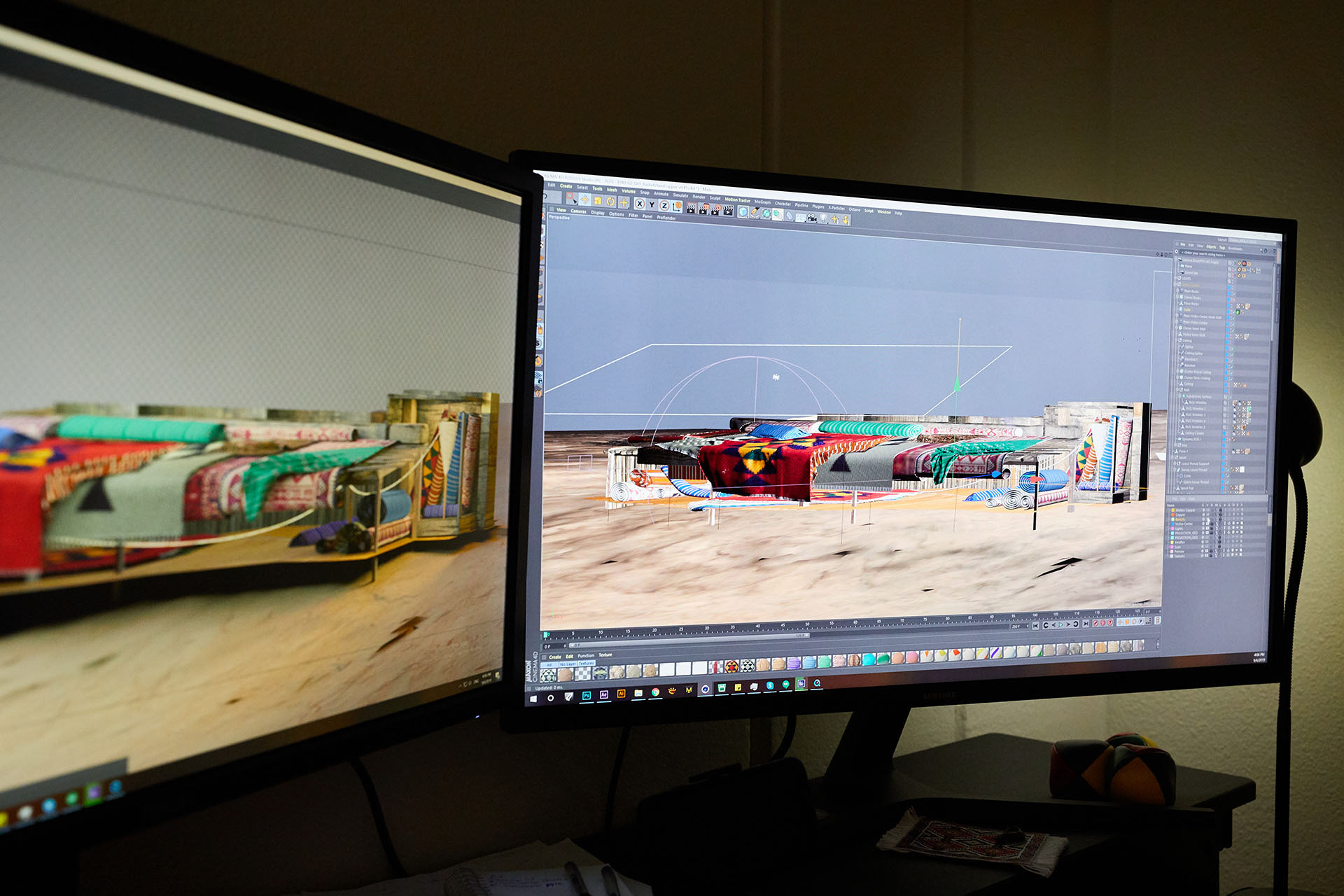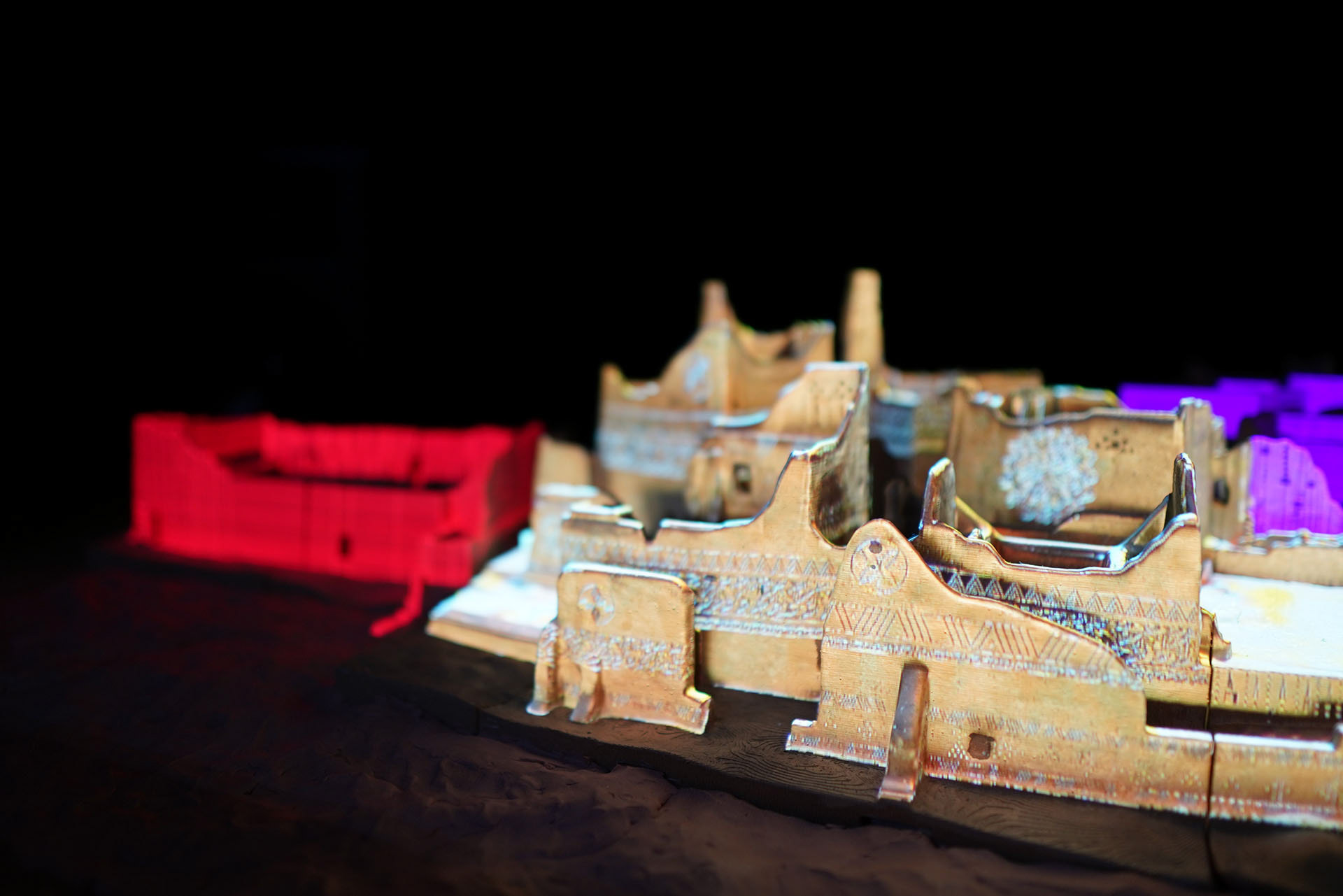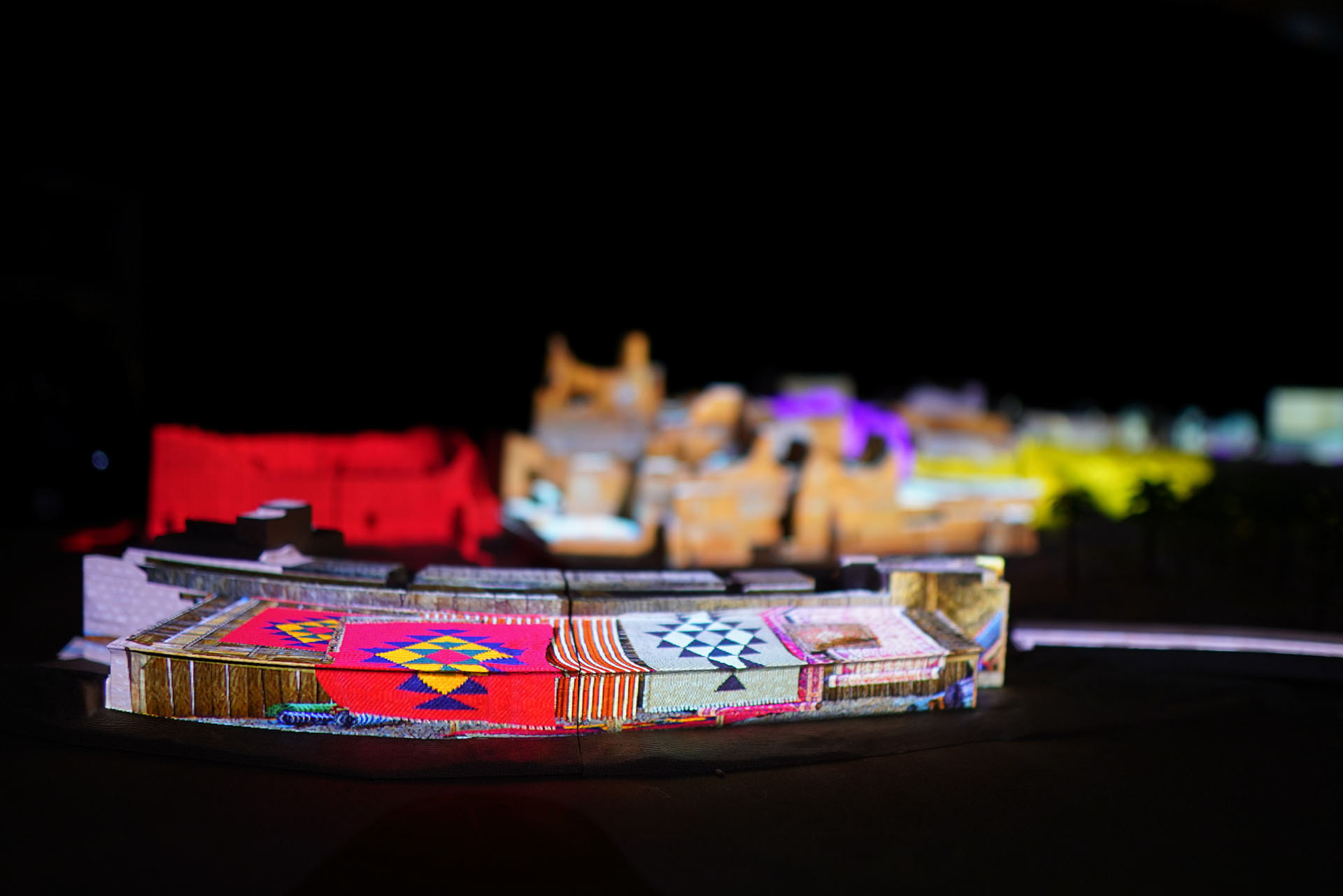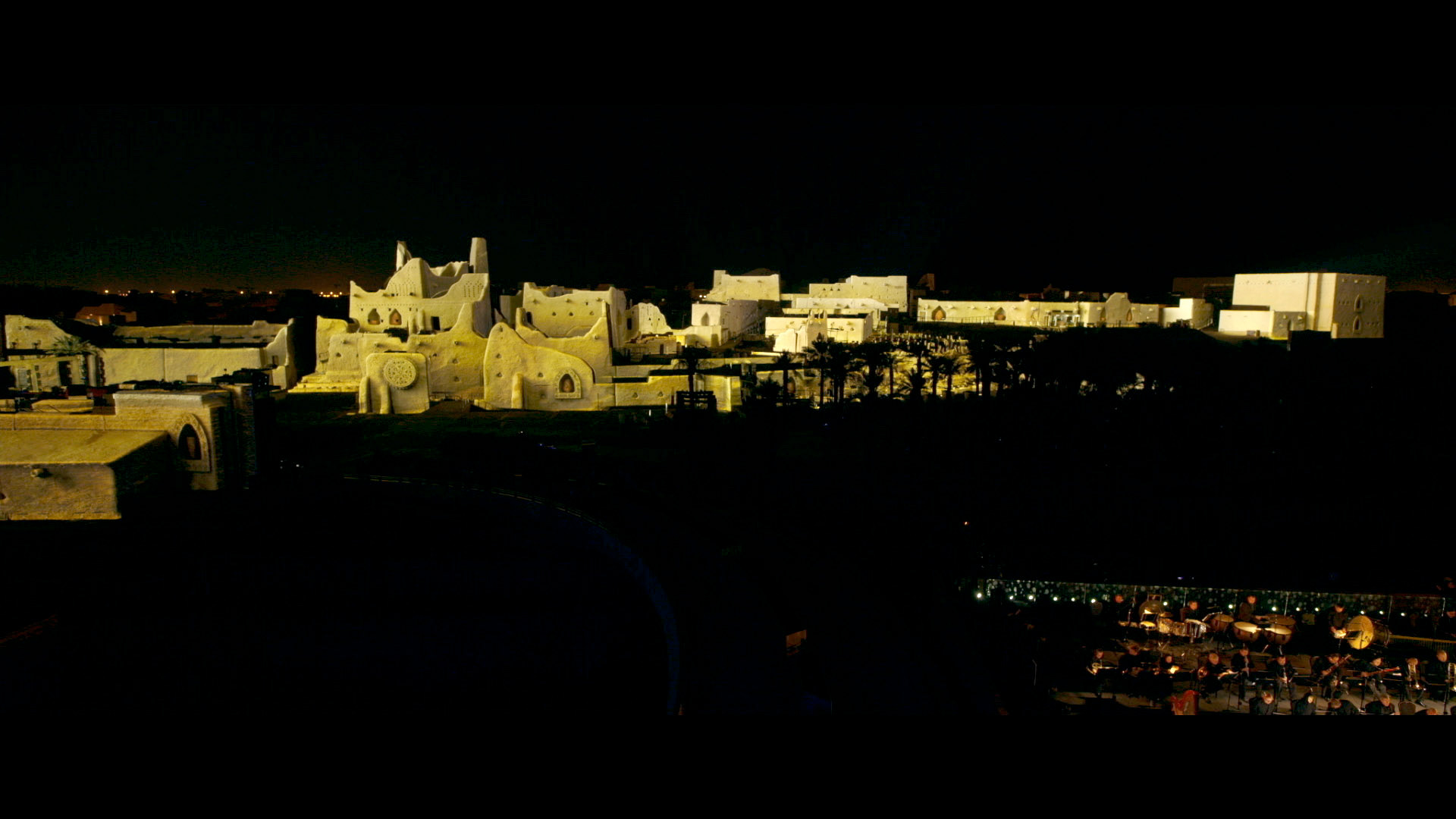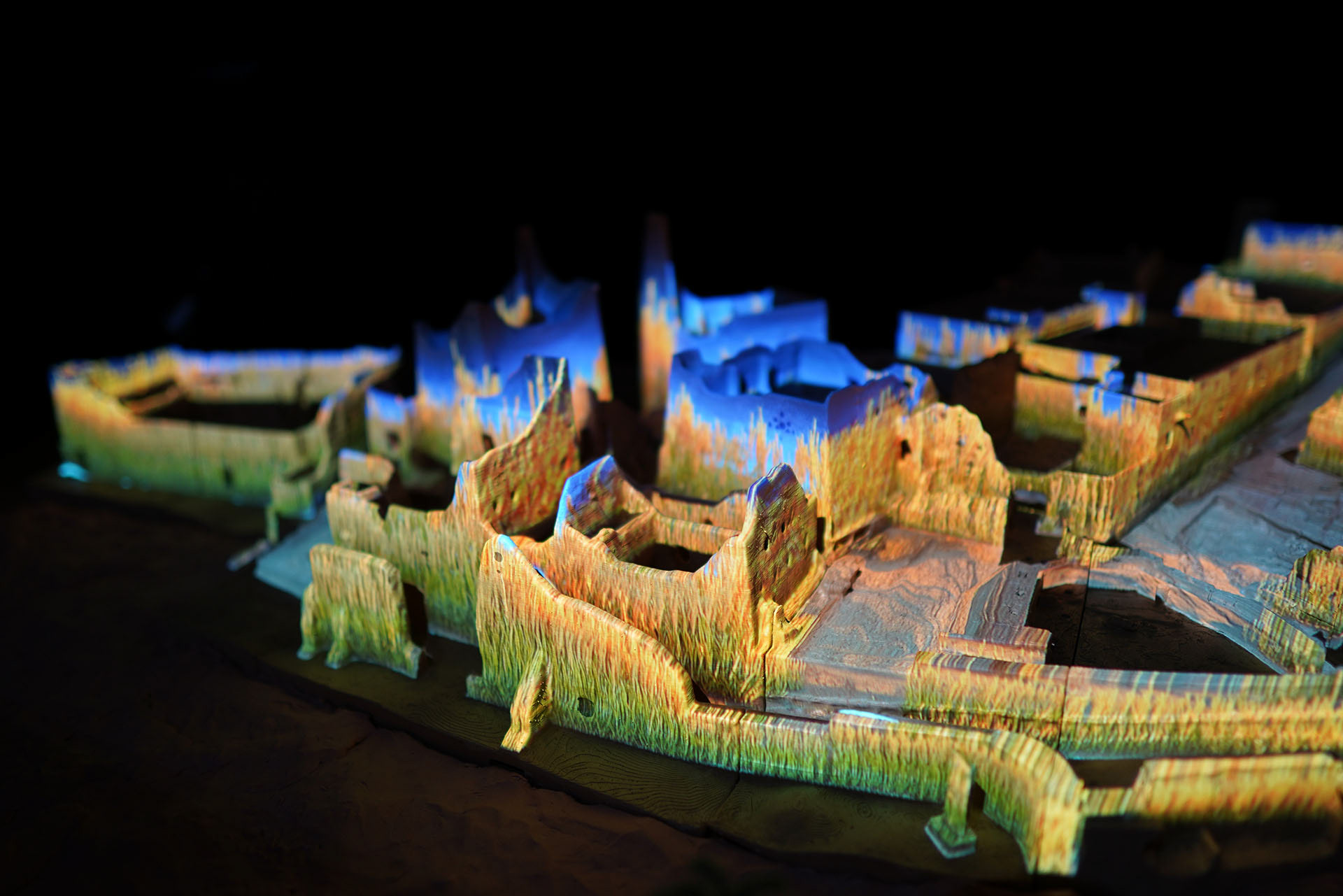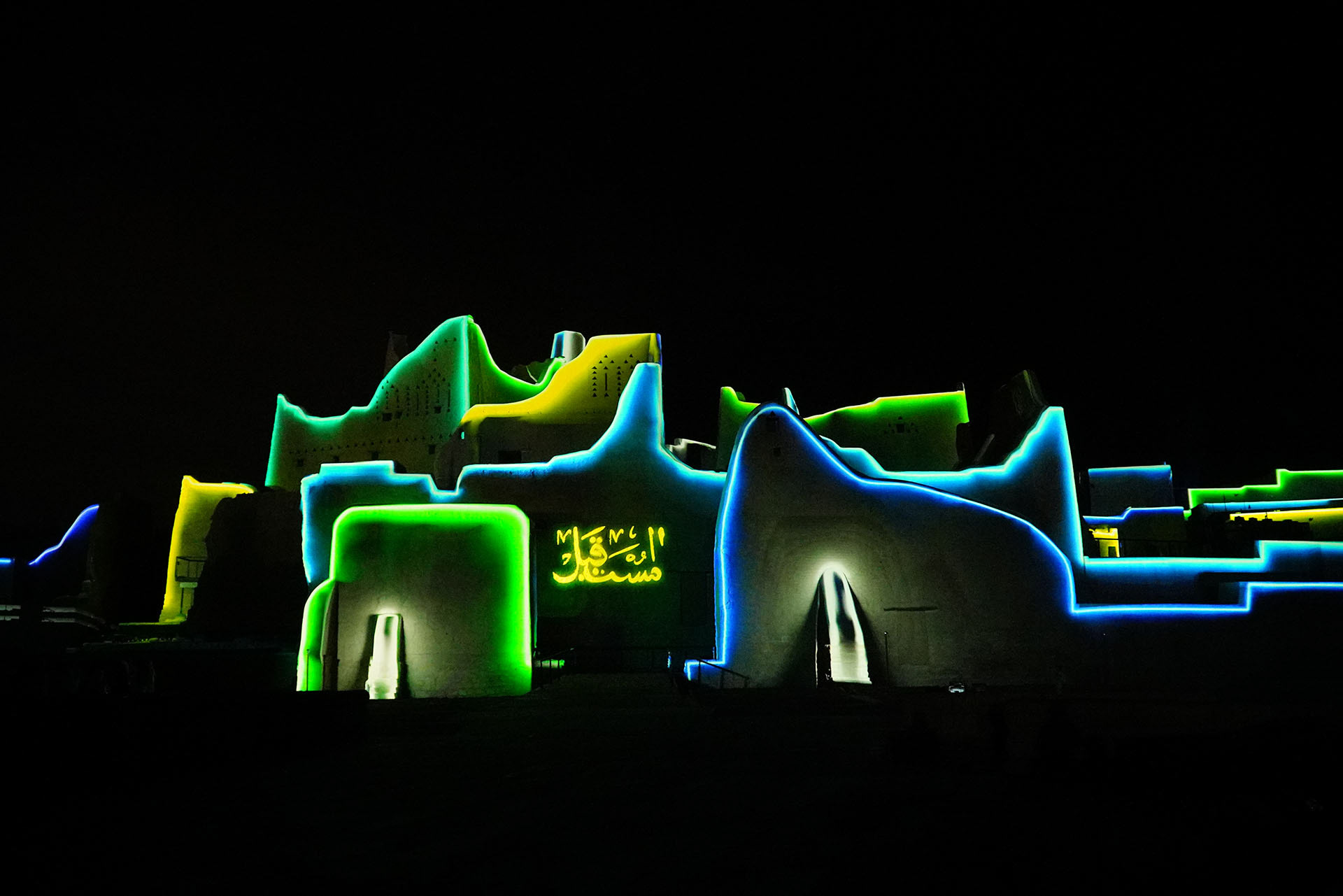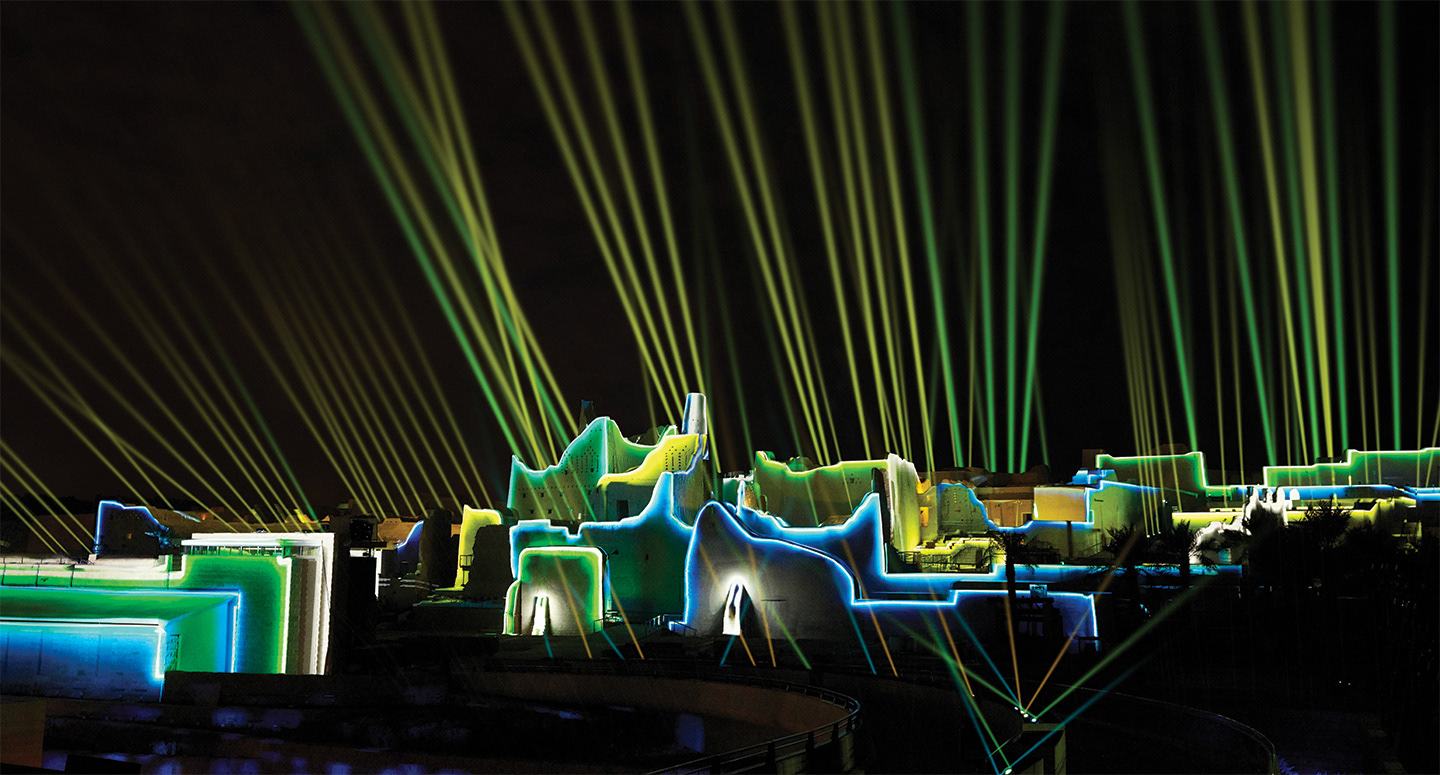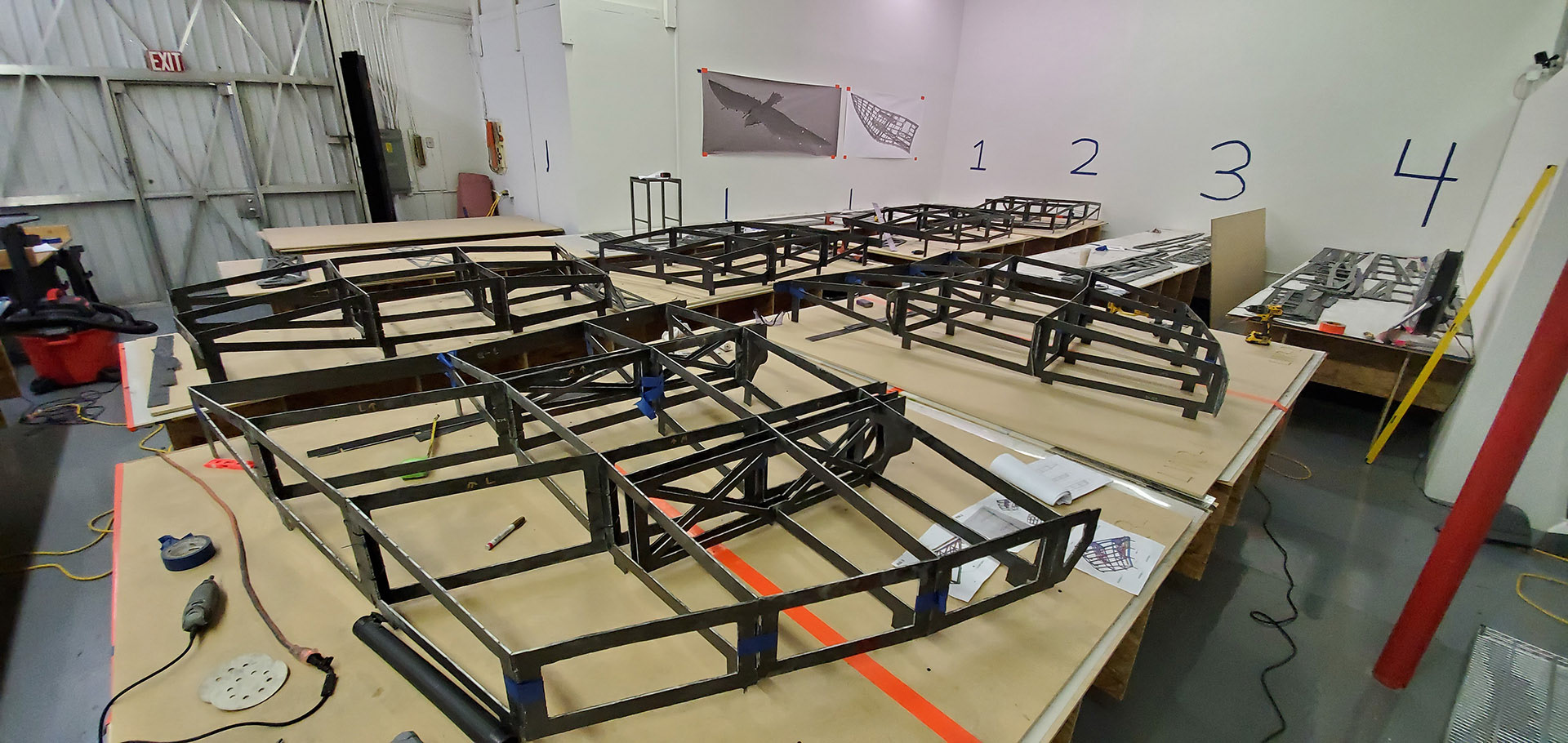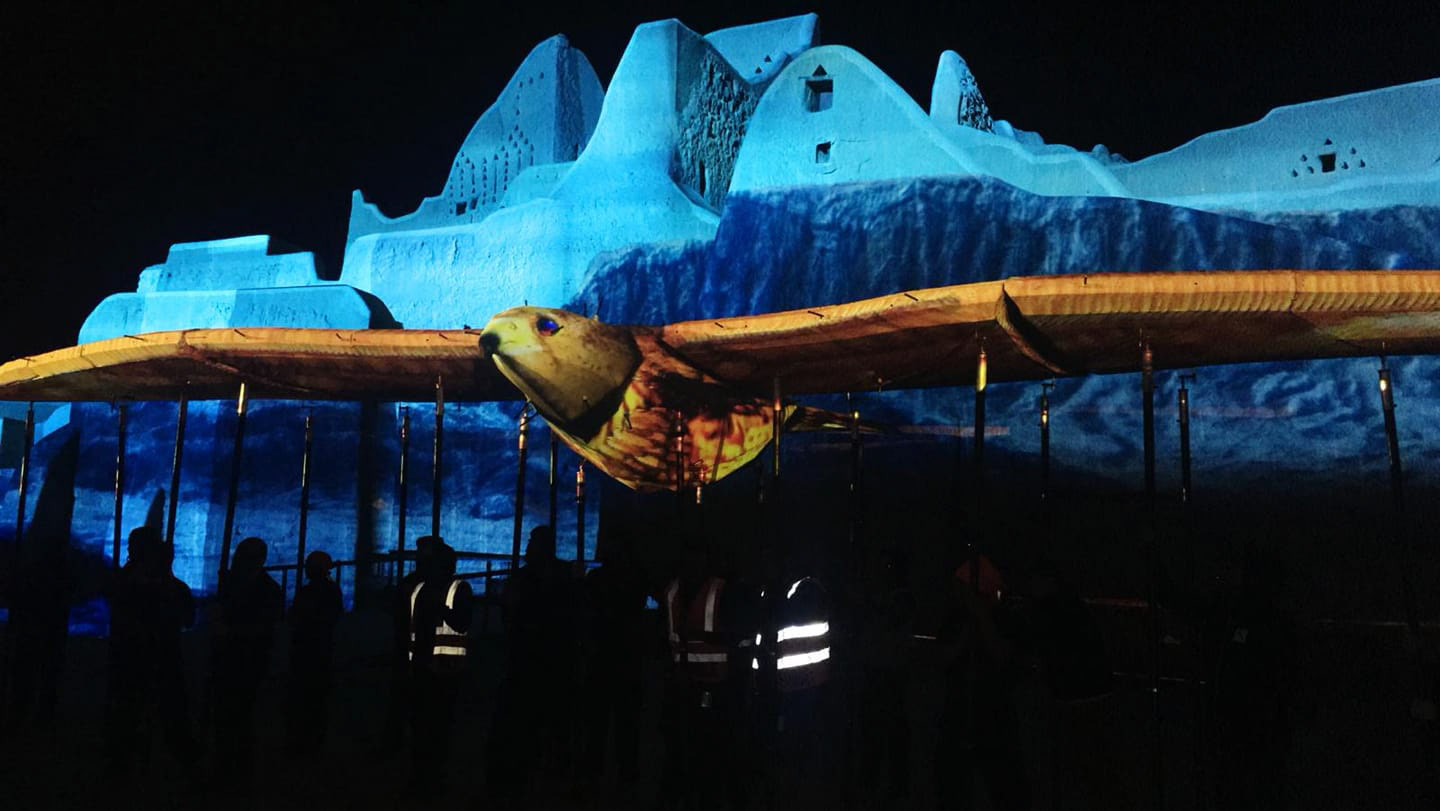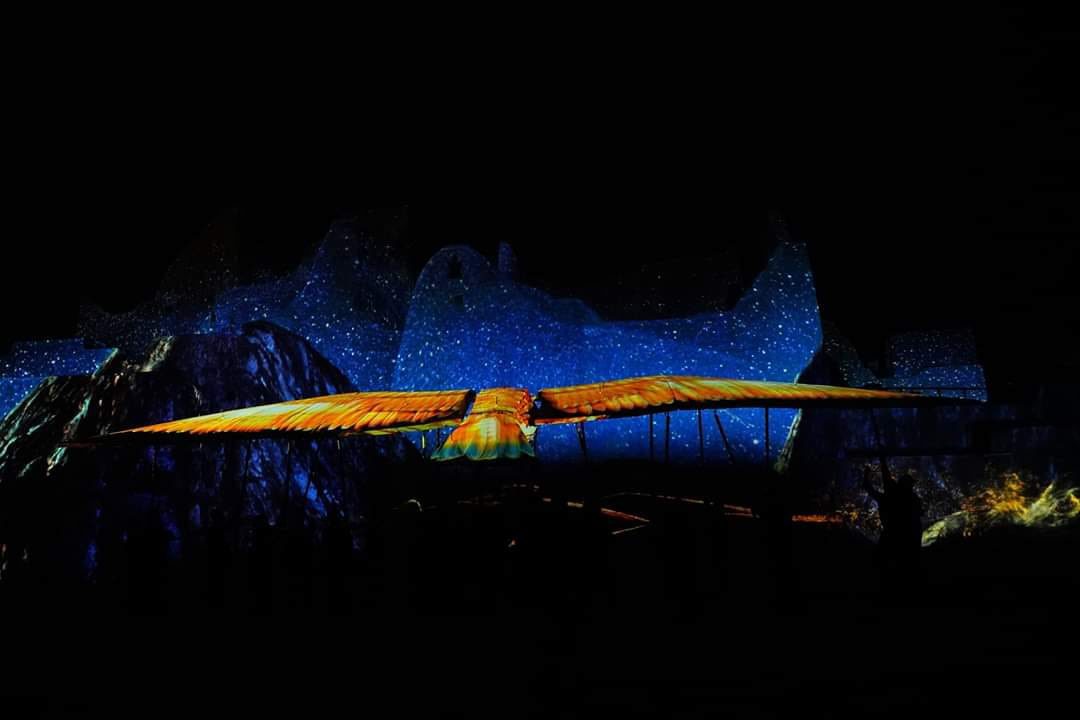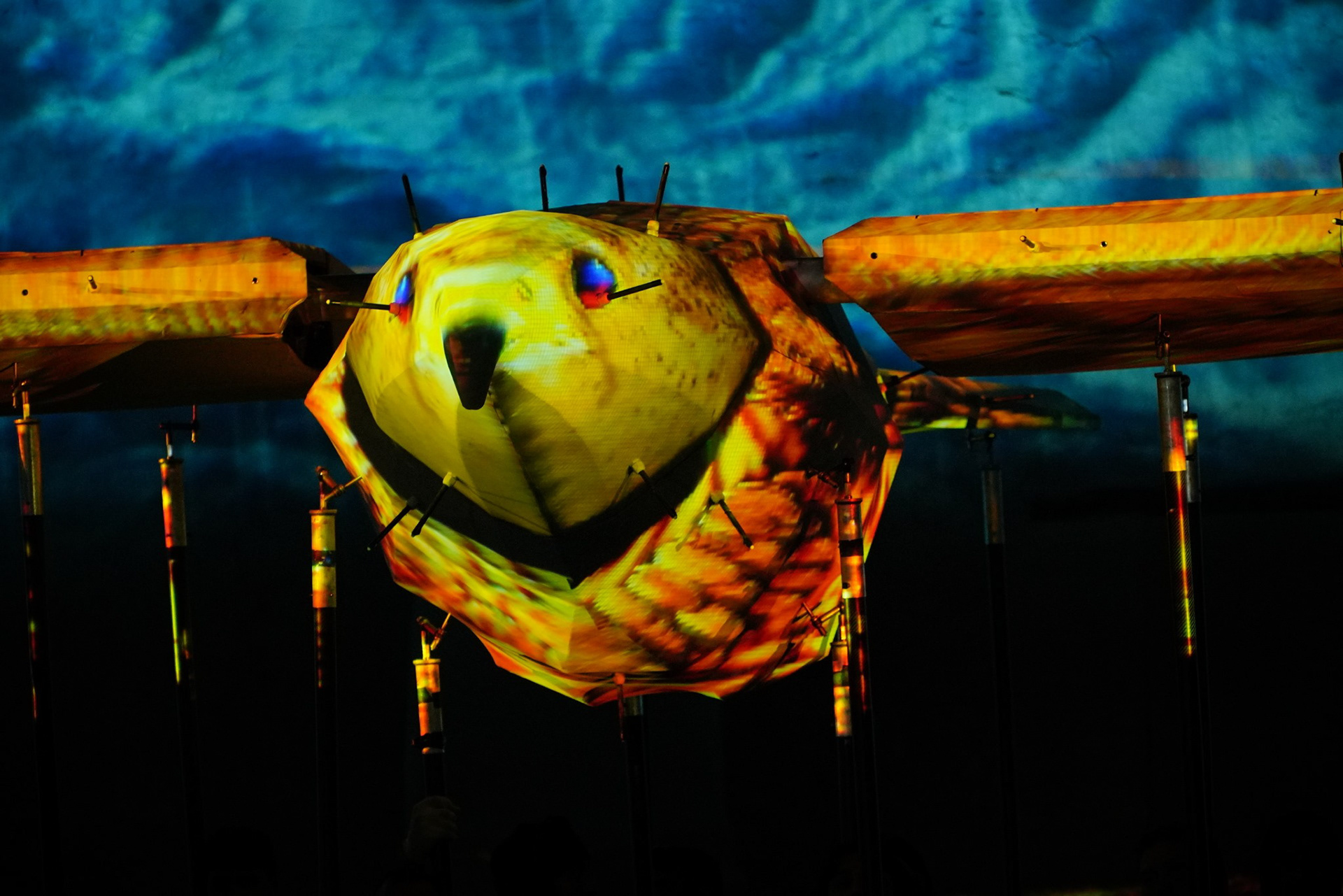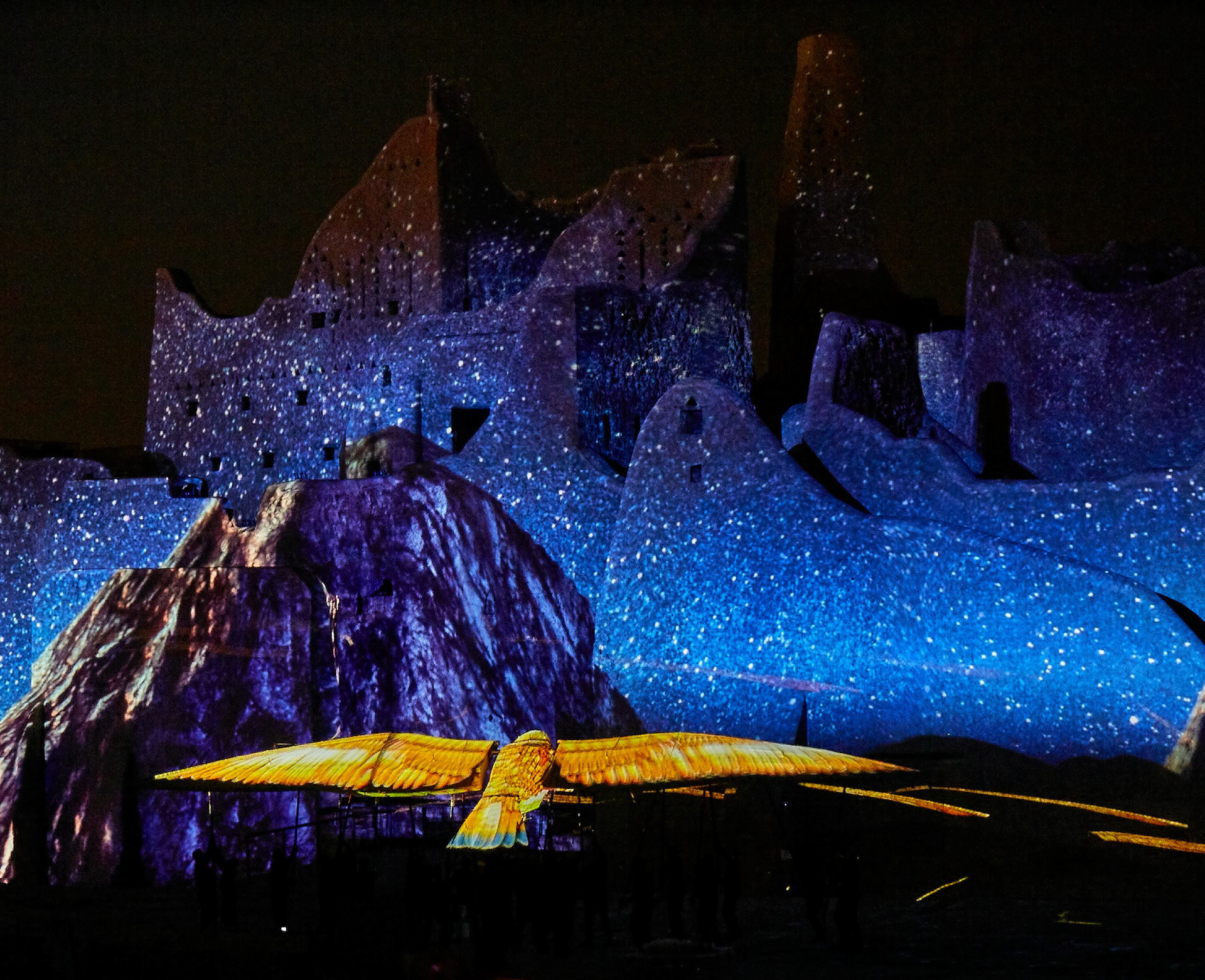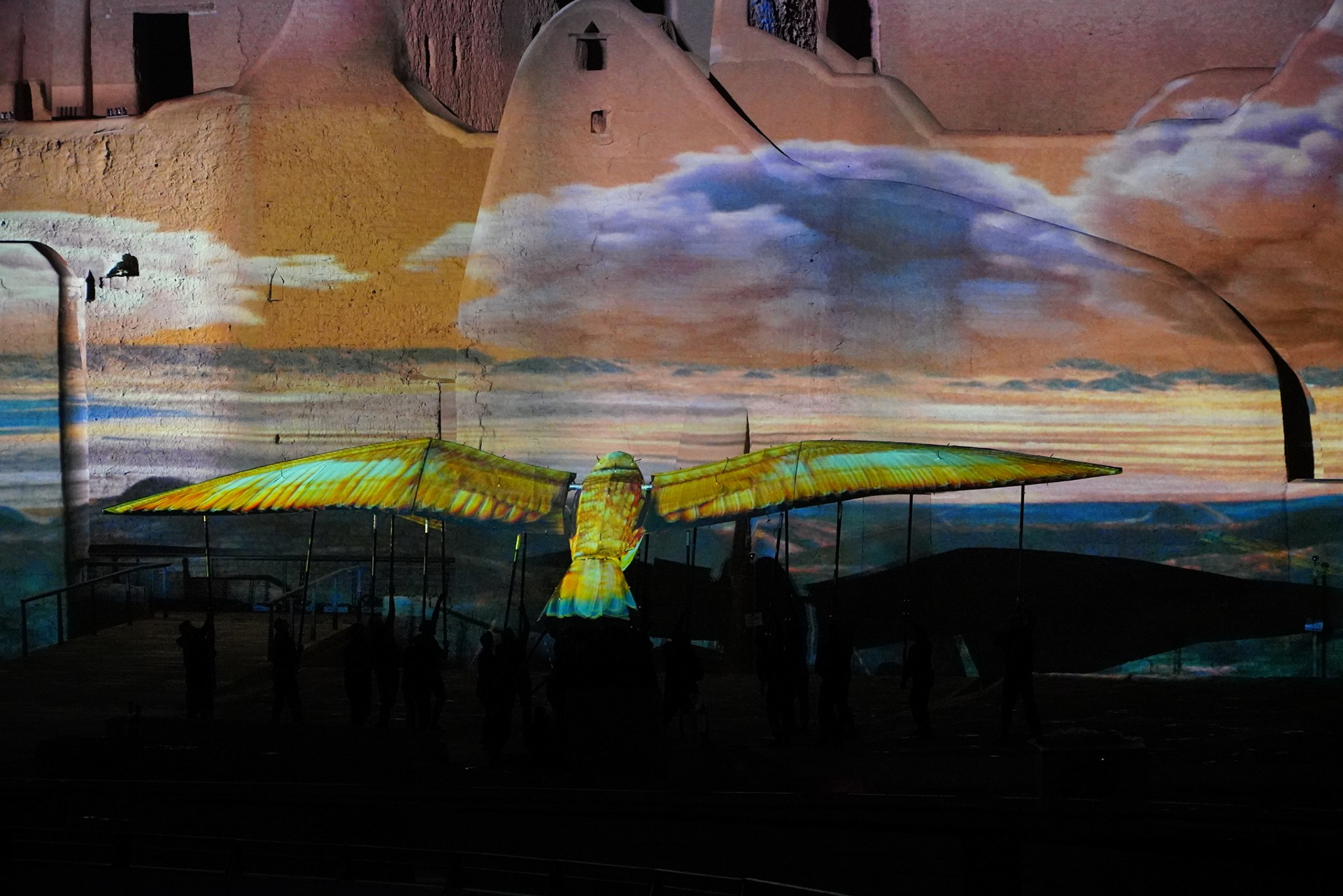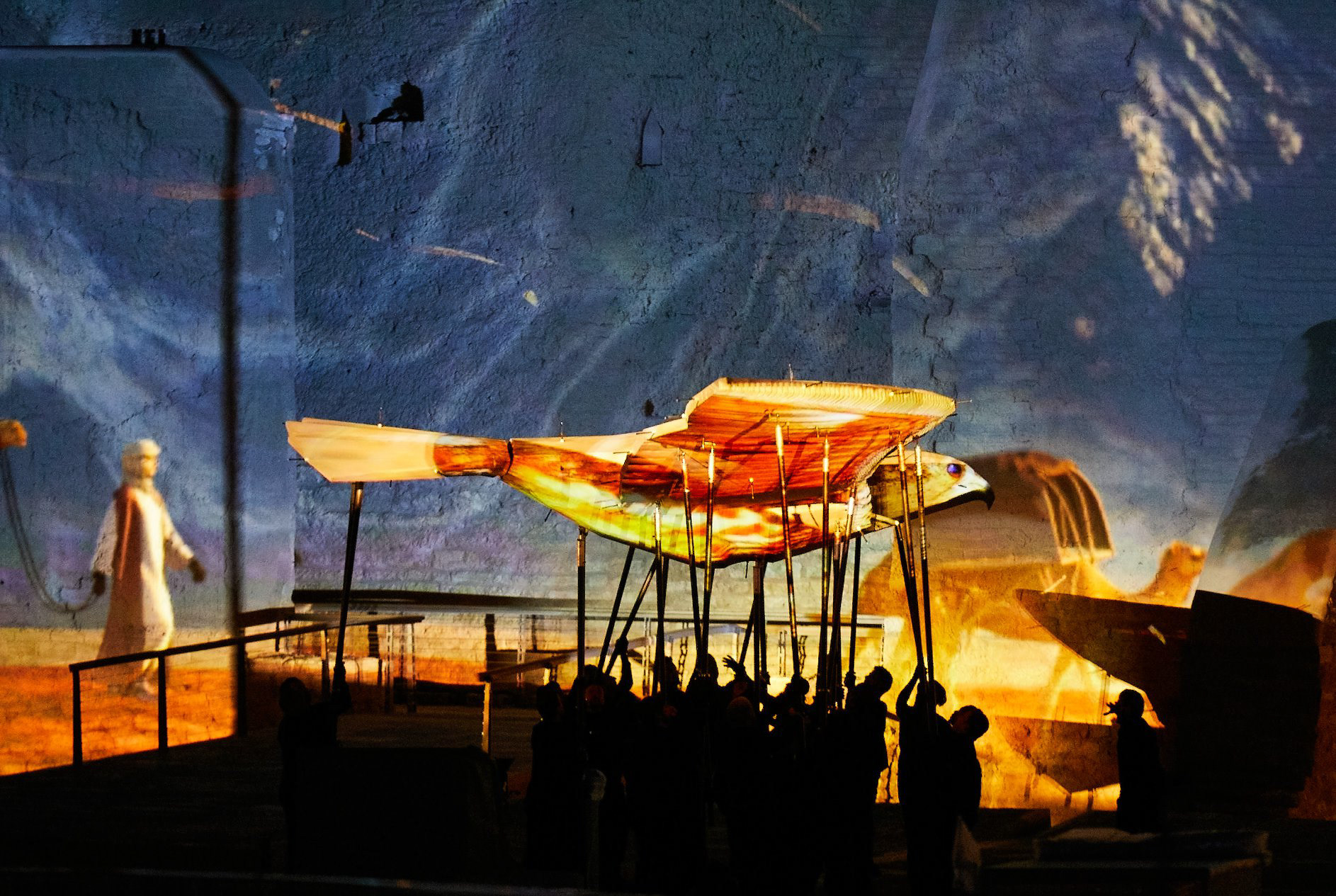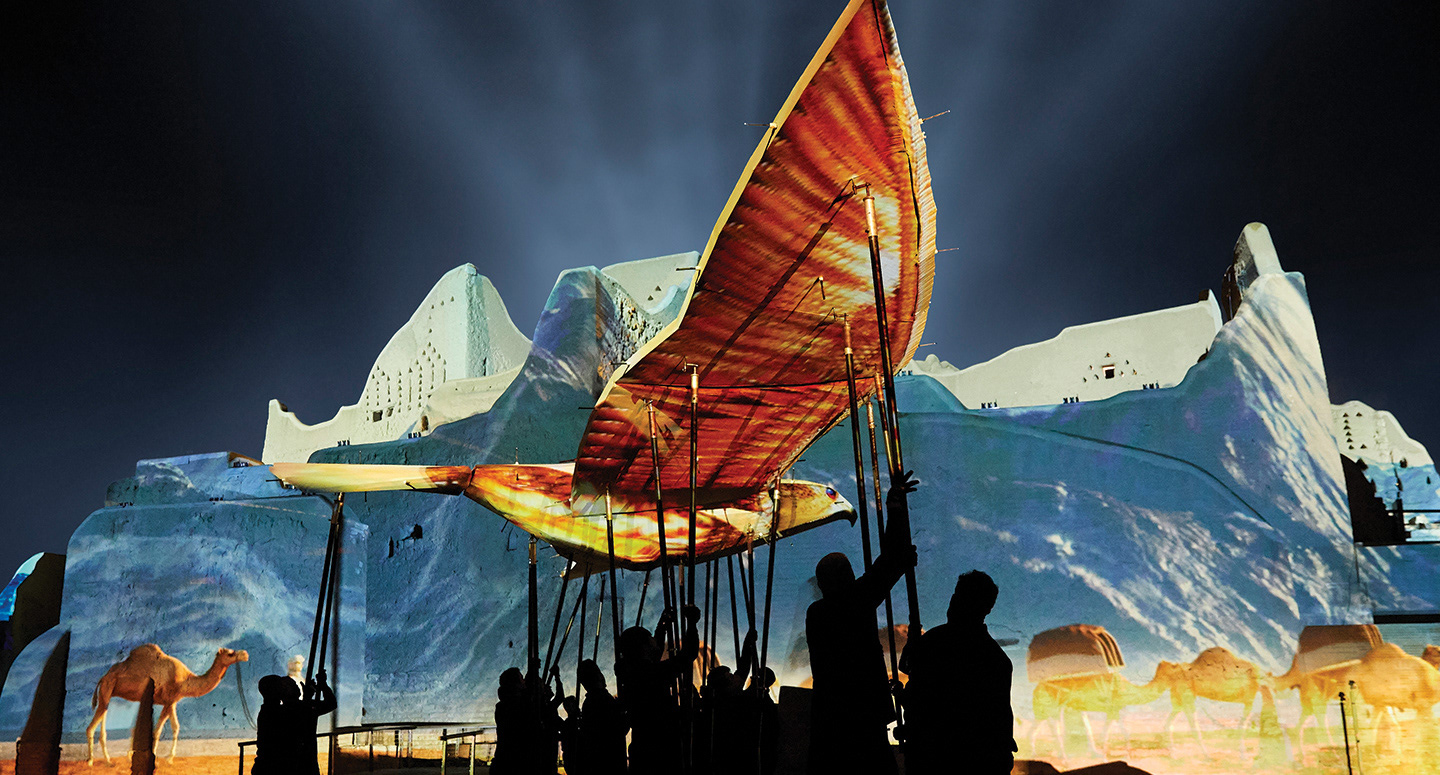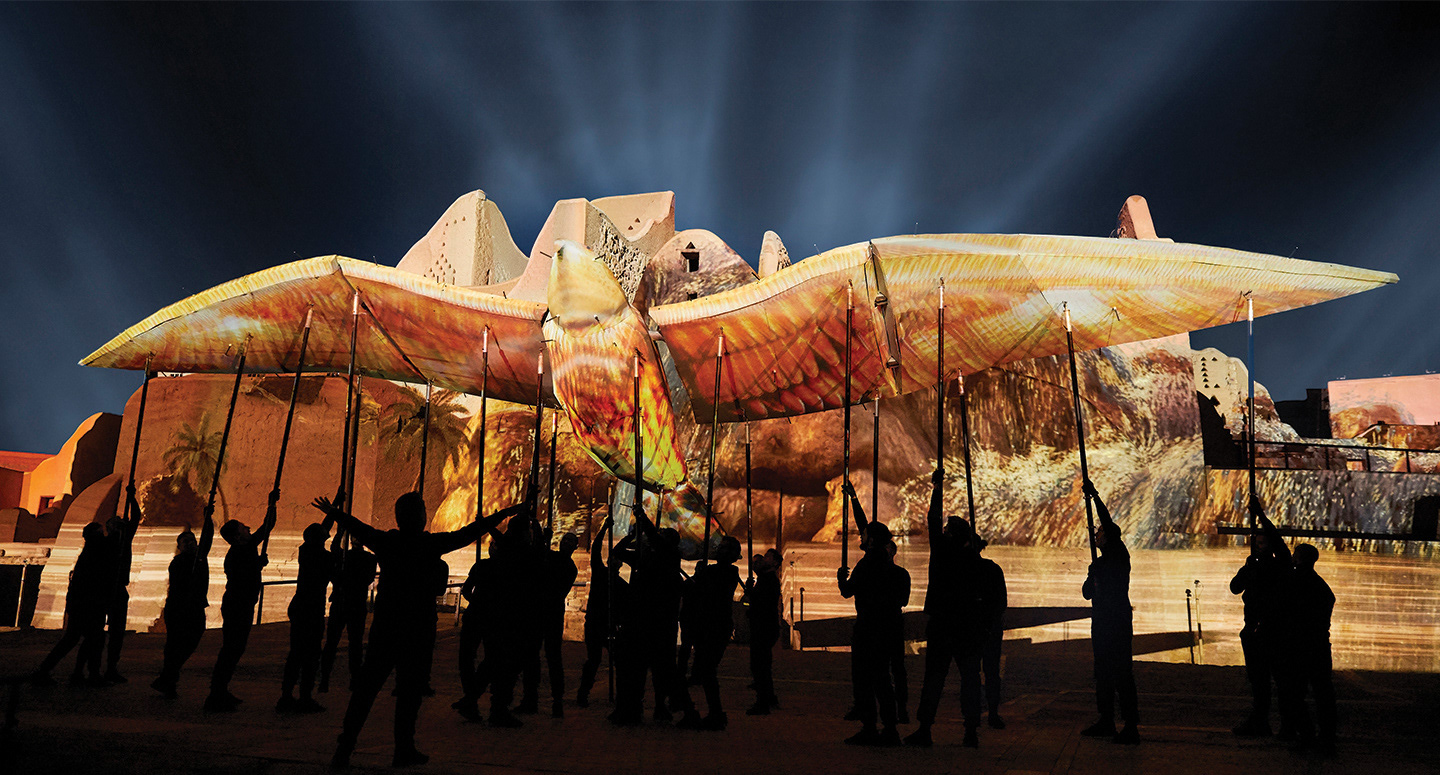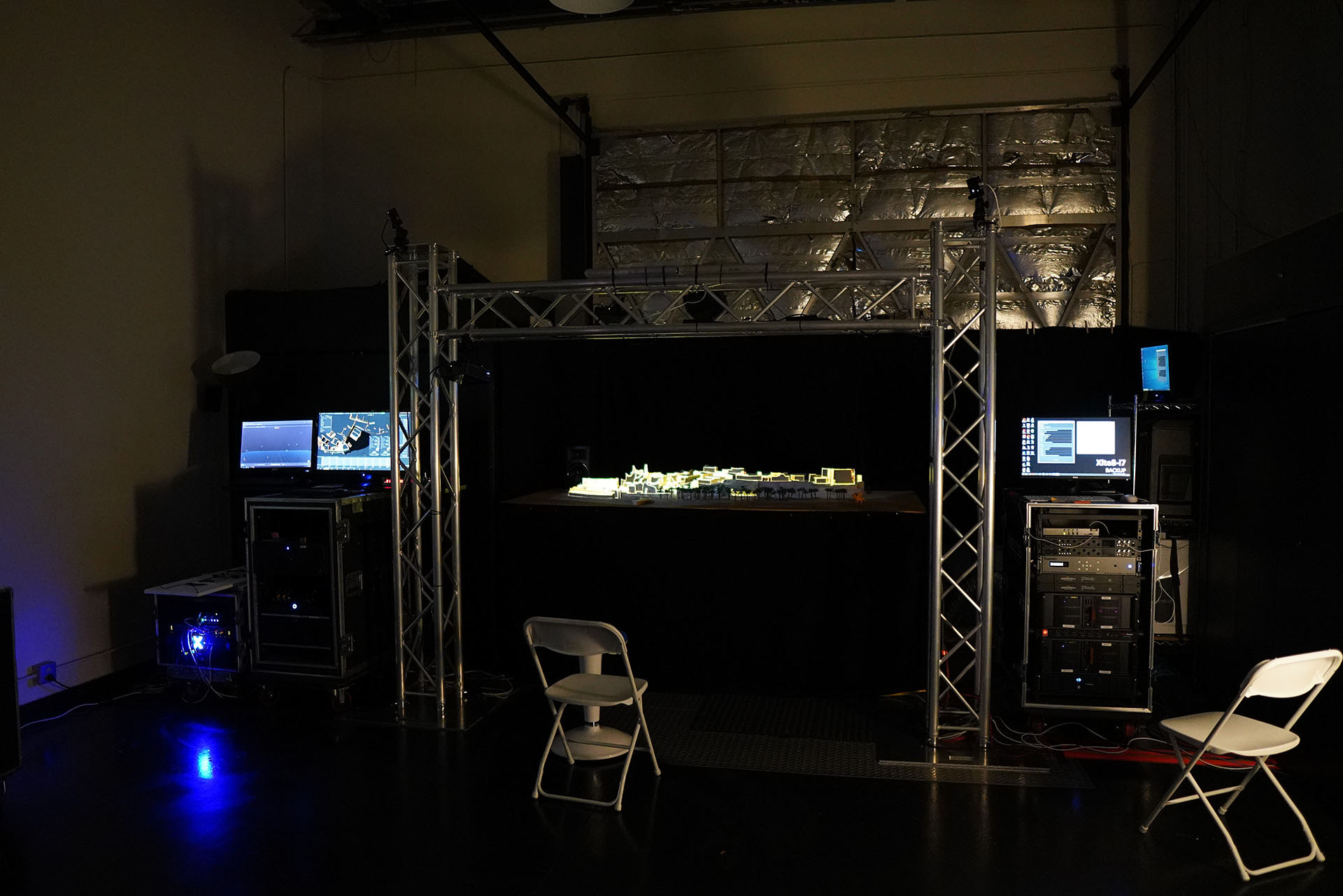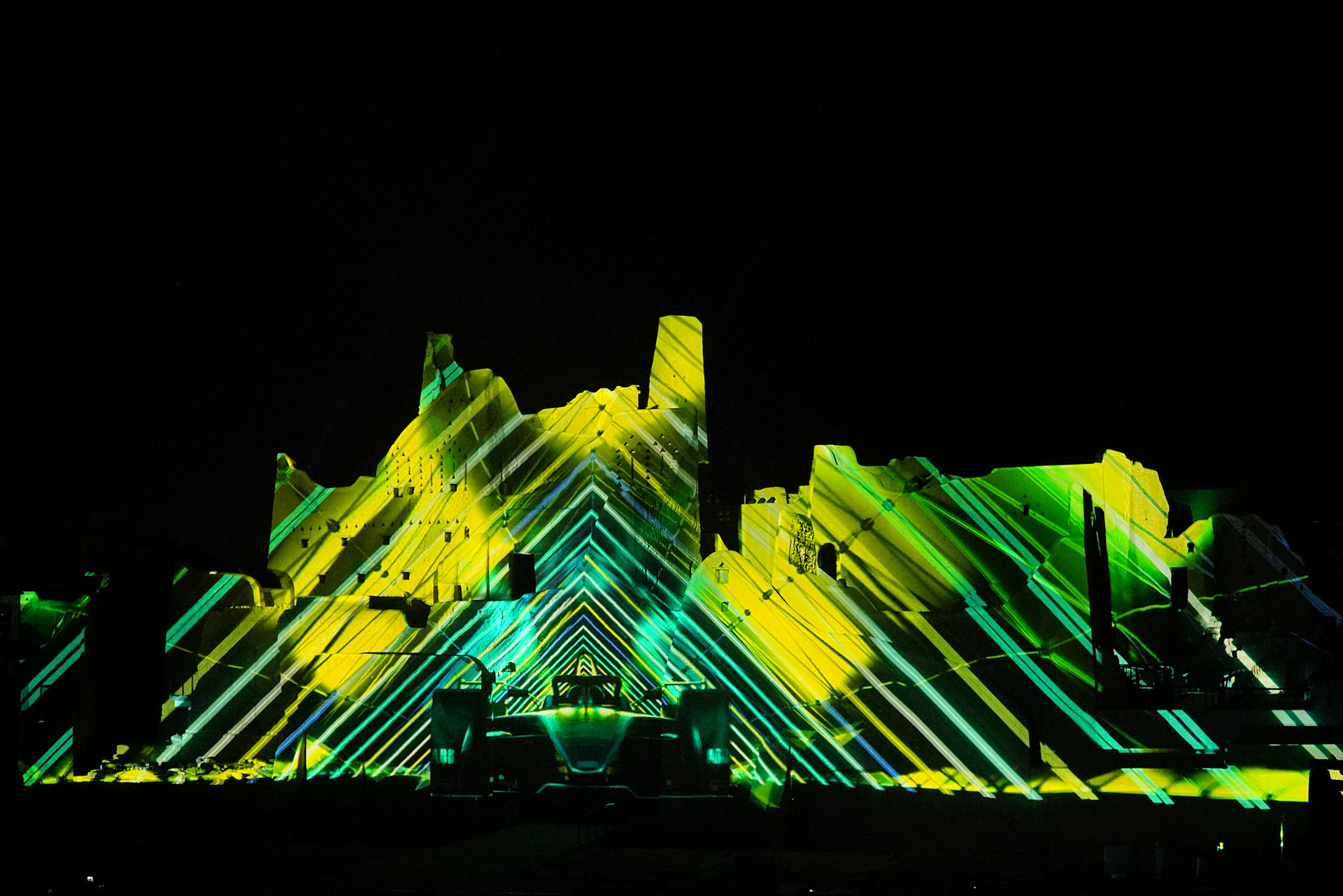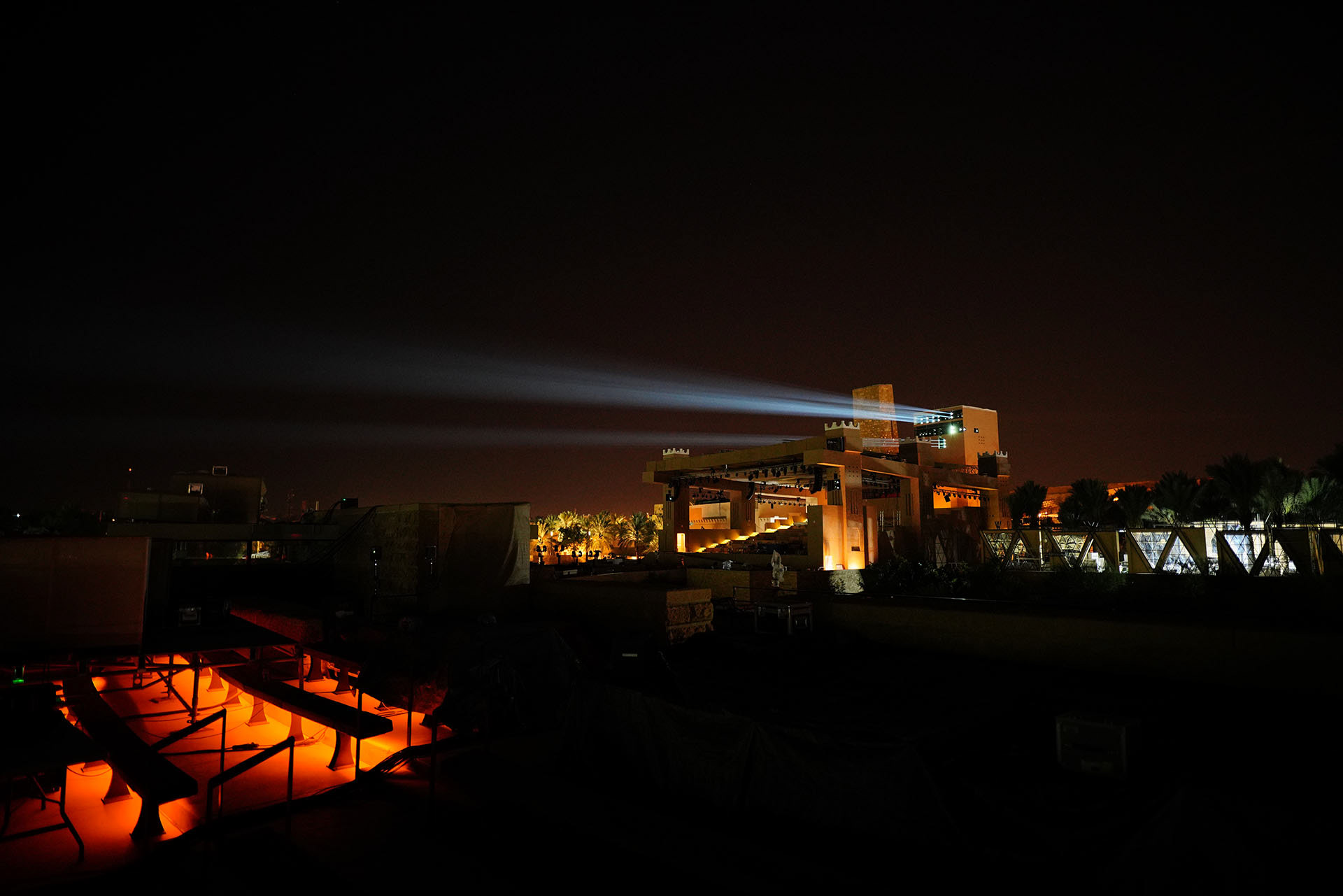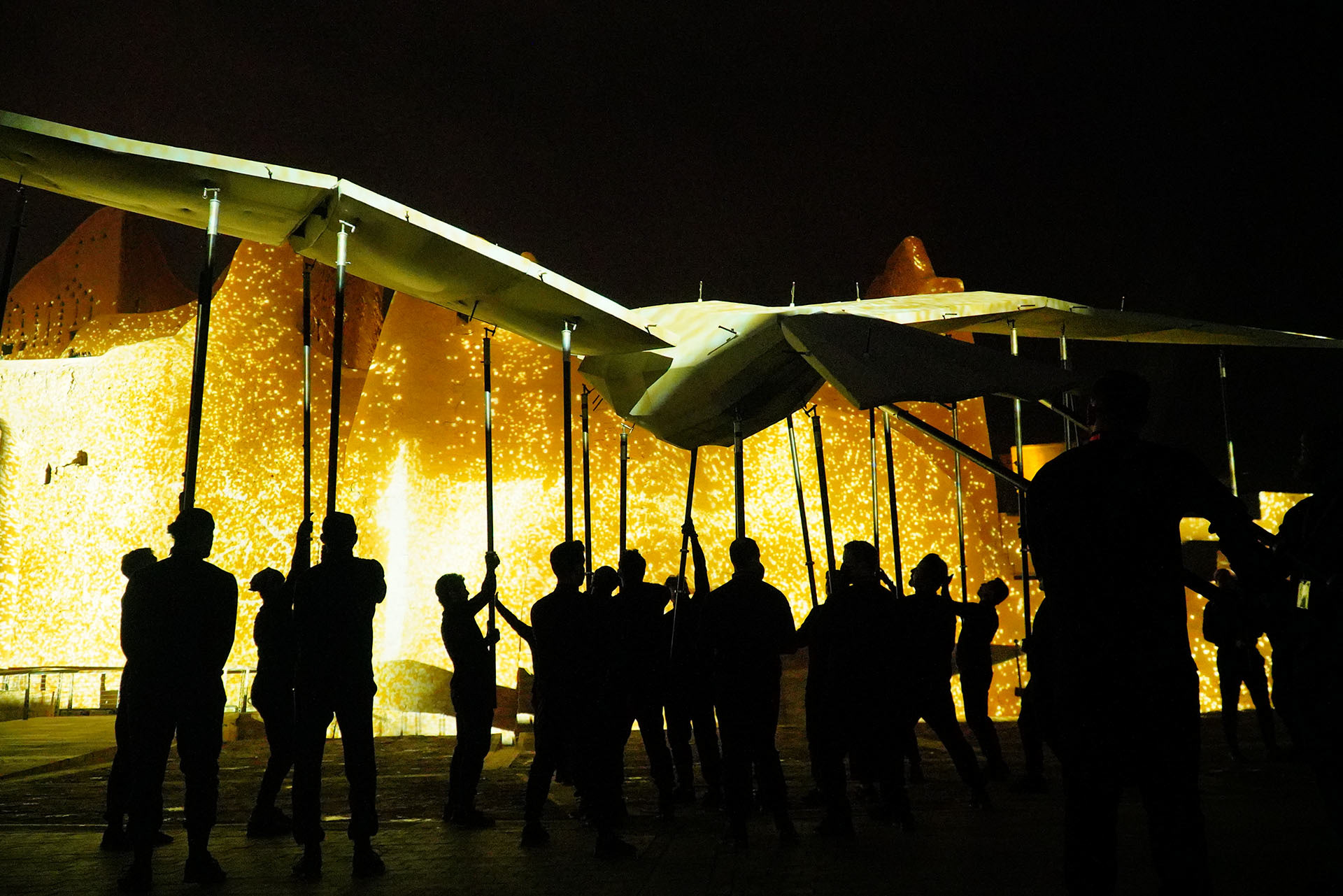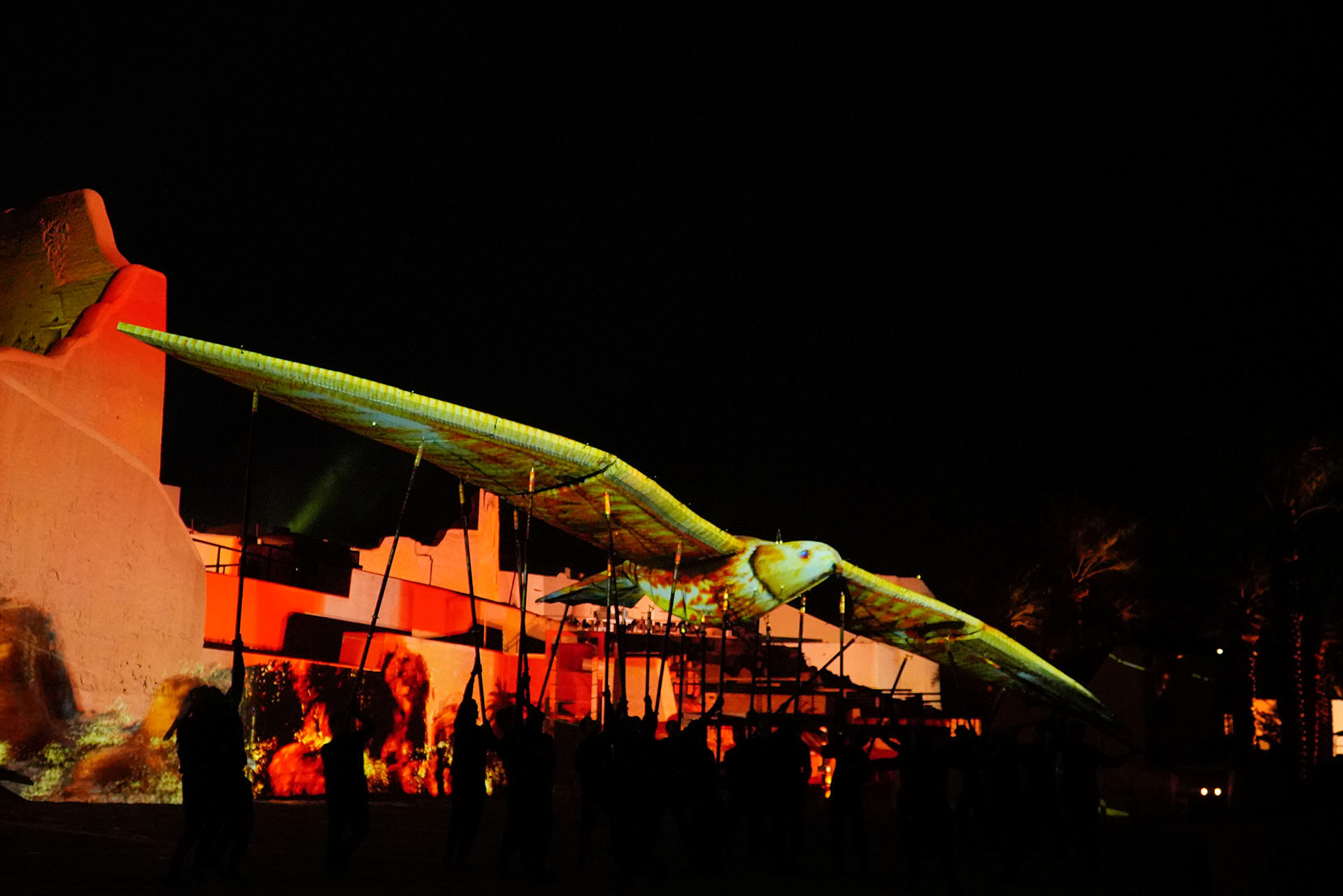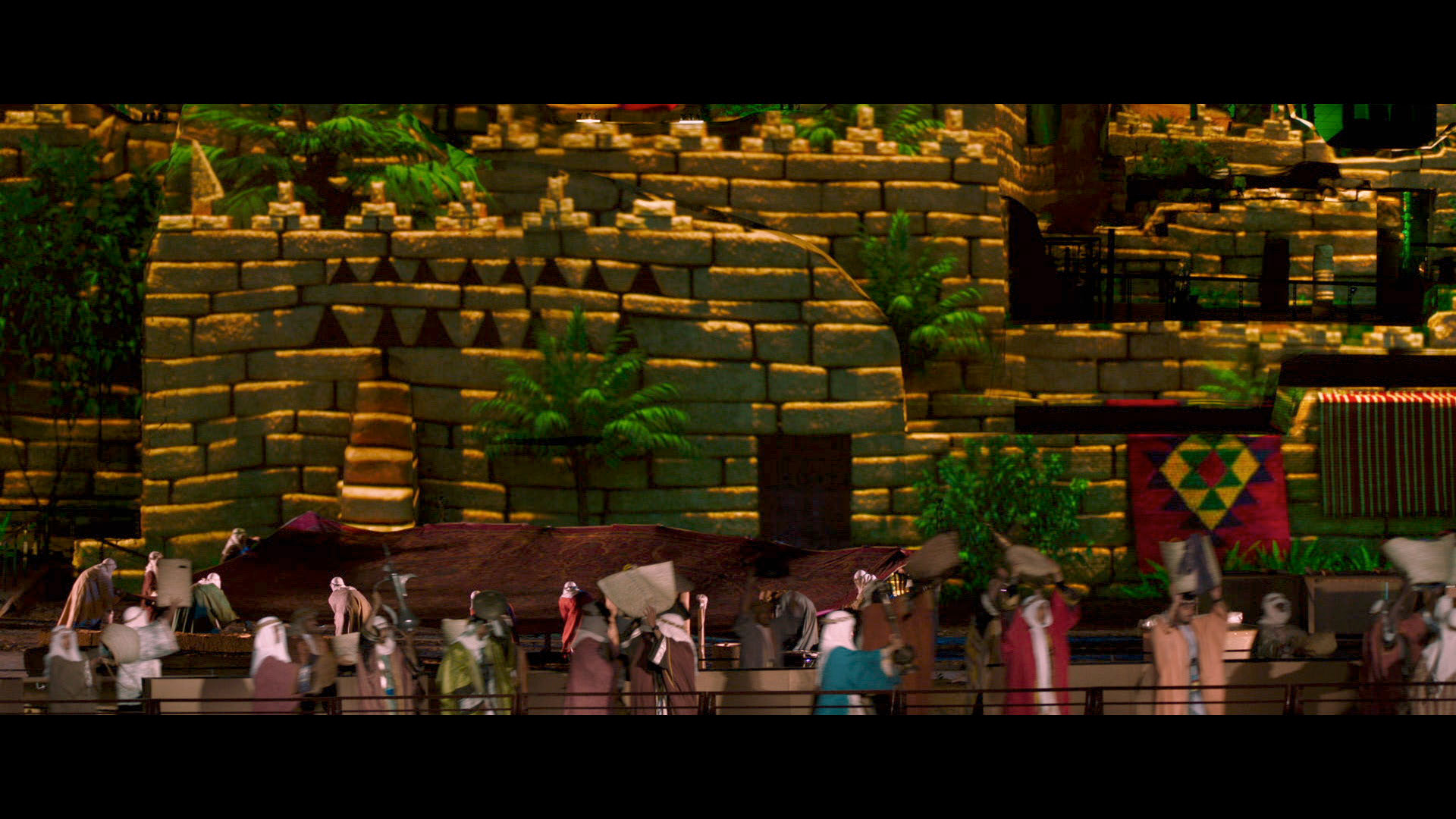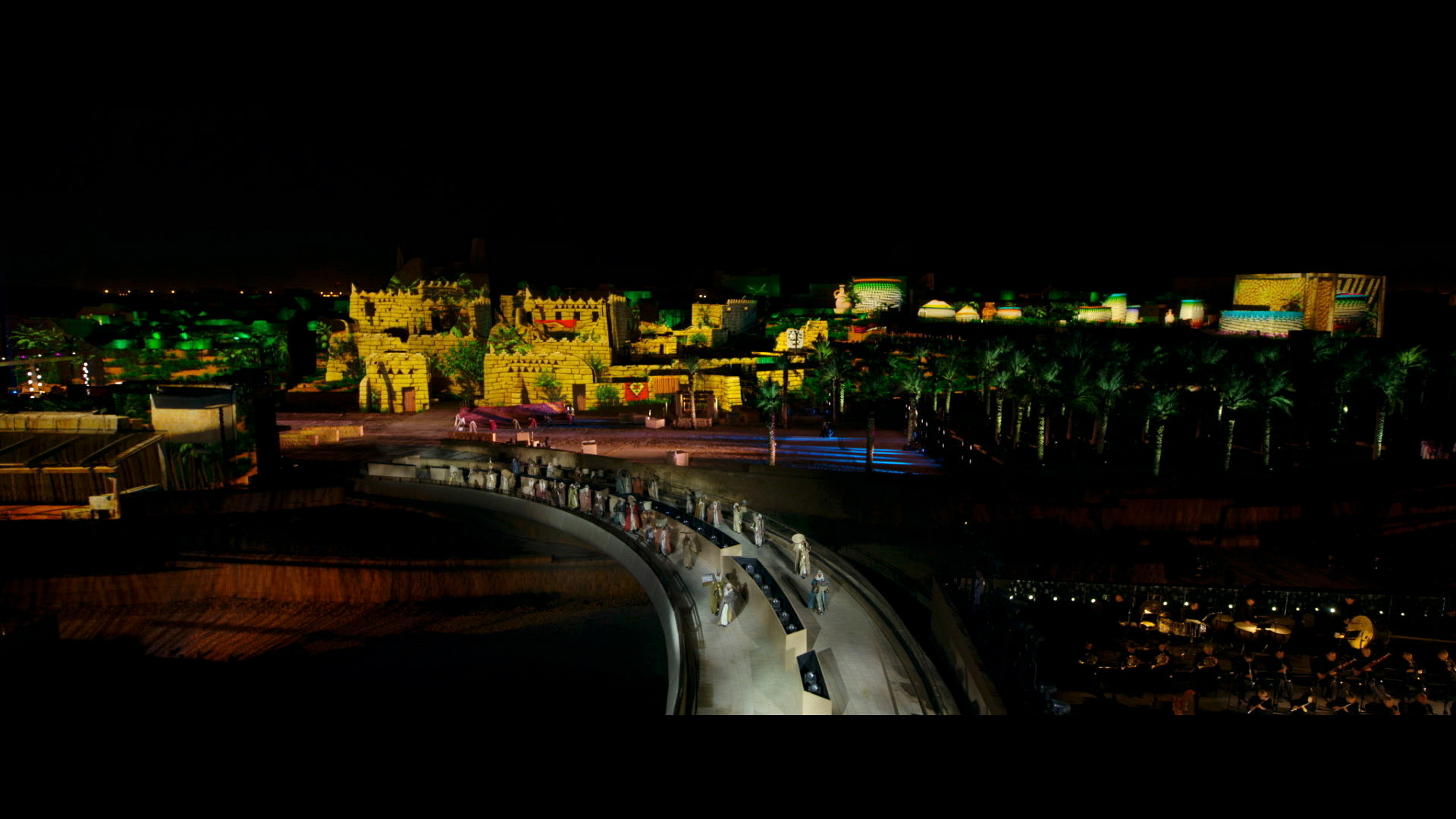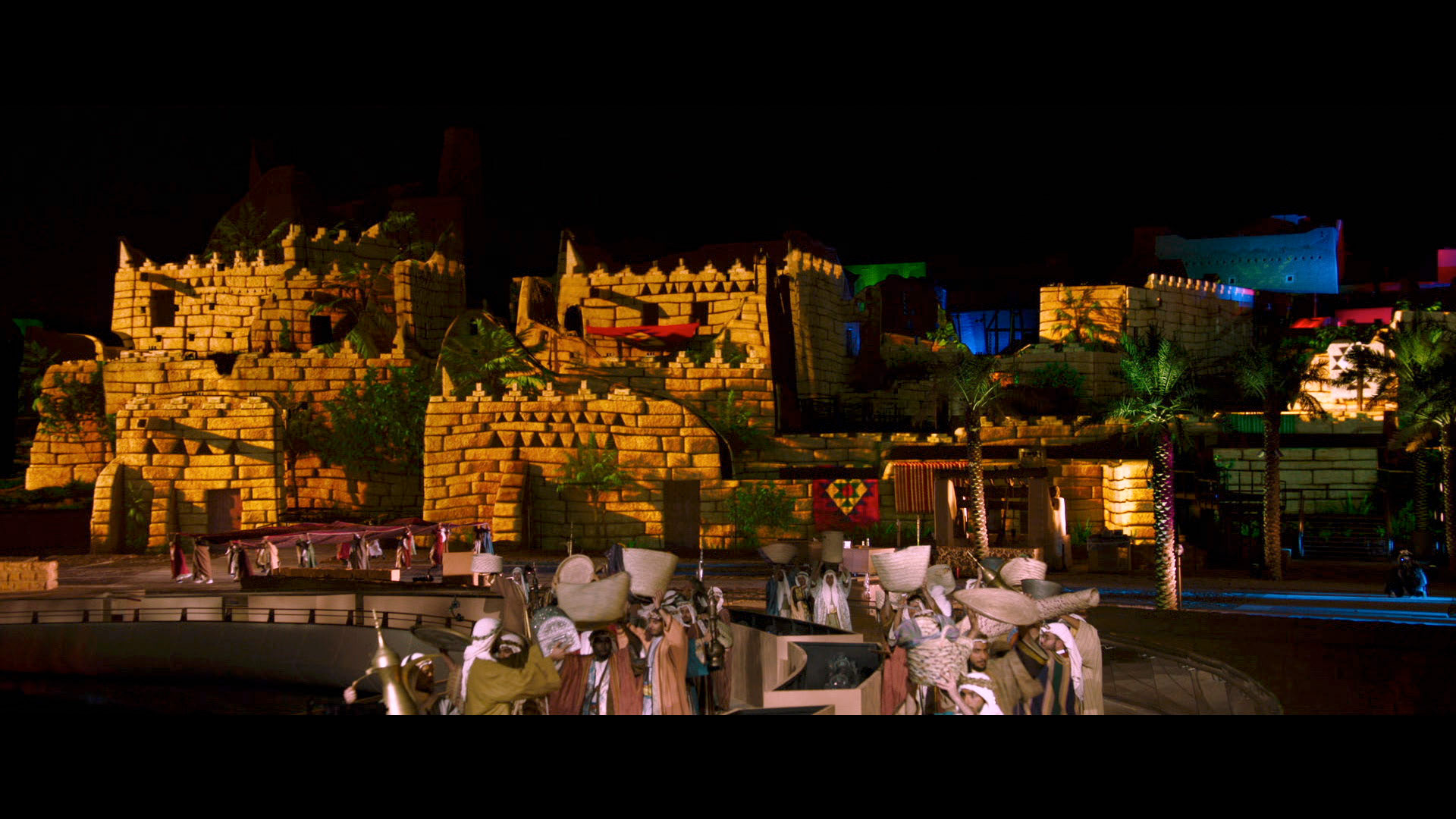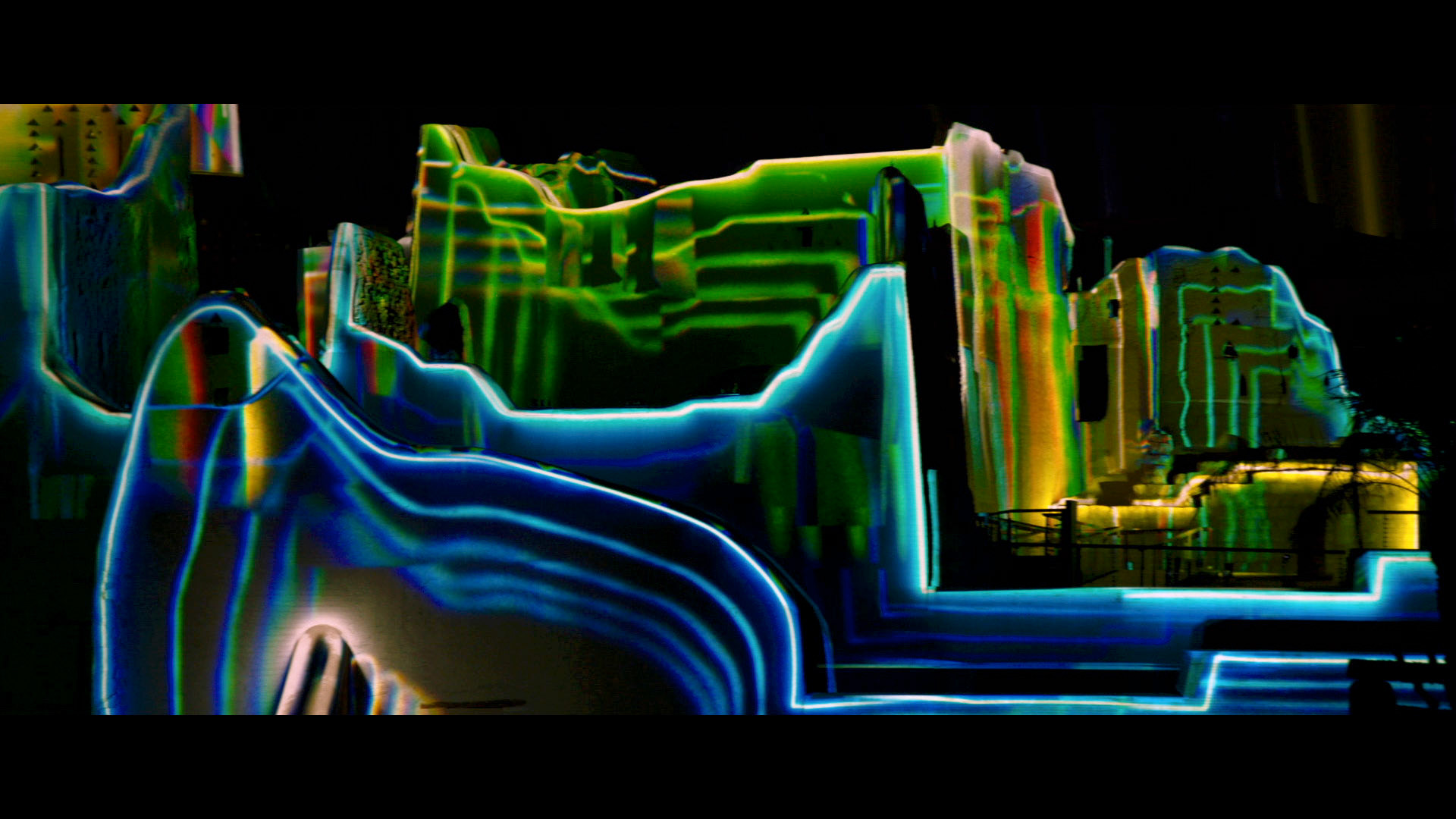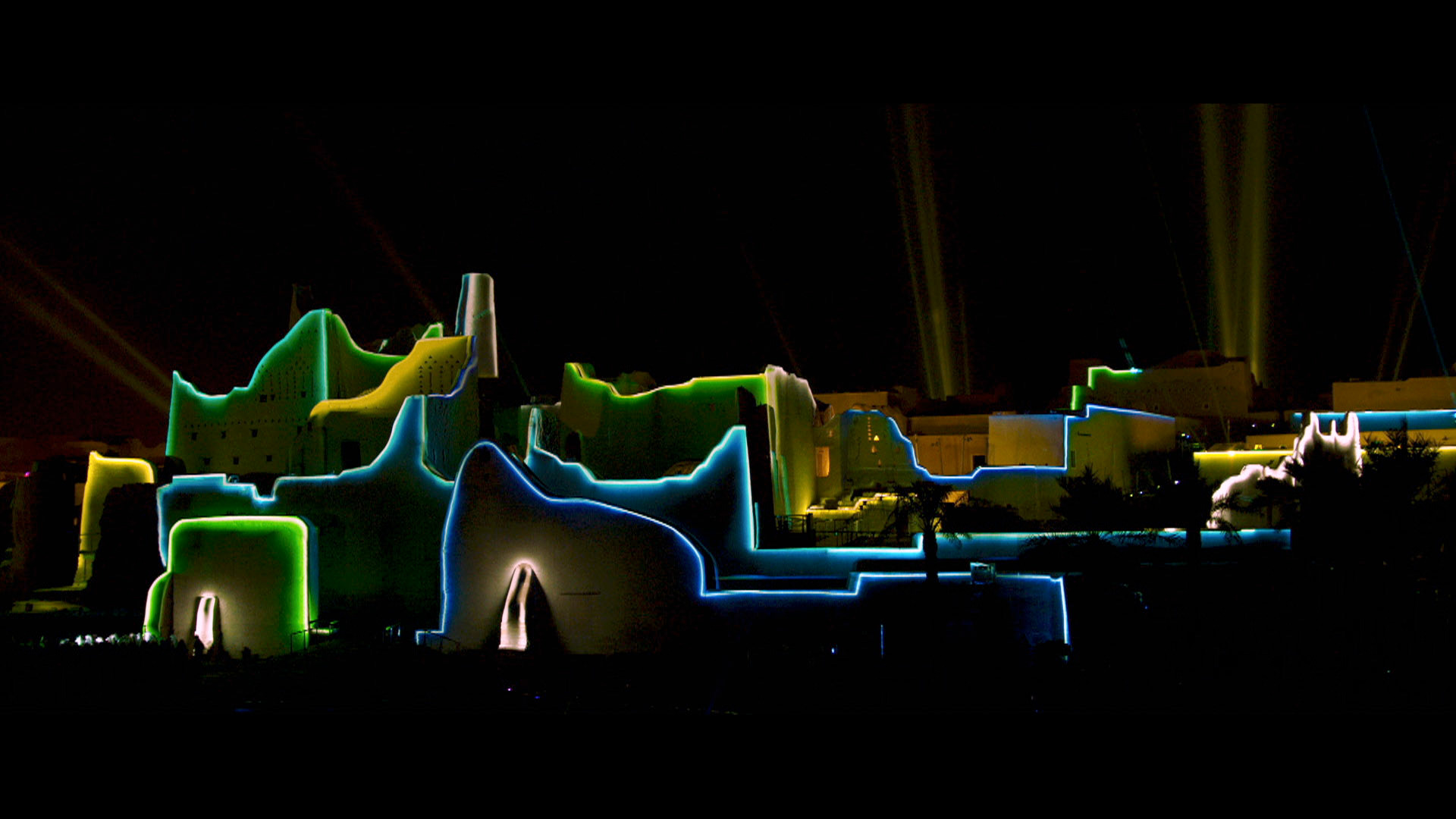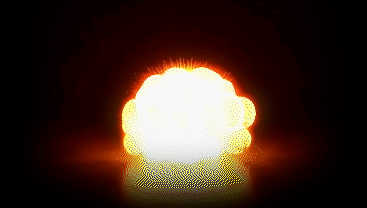DIRIYAH - UNESCO World Heritage Inauguration | Projection Mapping
3D Animation / 3D Modeling / Lighting / Rendering / Compositing
3D Animation / 3D Modeling / Lighting / Rendering / Compositing
The largest projection mapping ever on a historic city, with over 200 laser projectors, and rich narrative historical content.
To bring the story to life, the Xite Labs visual design team spent months designing a massive collection of original animated content. From the beginning, the idea was to apply dynamic visual motion to each of Diriyah’s 60+ unique surfaces. Every sequence of animated content was designed for movement and dynamic impact…a horse galloping across the city…a Formula One car racing through the vista…a rocket ship blasting skyward. Historically accurate reference was incorporated – drawings and artifacts, topographical maps, architectural studies, sociological and ecological data from Saudi PhDs and national historians. Xite brought the entertainment aspects to the show by creating ethereal sequences – caravans traveling under moonlight, golden dust transforming one scene to the next, flight simulations across multiple desert landscapes, etc. Xite created custom 3D characters as digital stand-ins for past Kings and princes, villagers, camels, and other living creatures. Using motion capture sessions, Xite acted out scenes and applied these motions to CG characters, which projected back onto the city walls. Ancient versions of the city were re-created, building up first from the river, wheatfields, and more primitive structures that gave way to the shapes Diriyah is recognized for today.
To bring the story to life, the Xite Labs visual design team spent months designing a massive collection of original animated content. From the beginning, the idea was to apply dynamic visual motion to each of Diriyah’s 60+ unique surfaces. Every sequence of animated content was designed for movement and dynamic impact…a horse galloping across the city…a Formula One car racing through the vista…a rocket ship blasting skyward. Historically accurate reference was incorporated – drawings and artifacts, topographical maps, architectural studies, sociological and ecological data from Saudi PhDs and national historians. Xite brought the entertainment aspects to the show by creating ethereal sequences – caravans traveling under moonlight, golden dust transforming one scene to the next, flight simulations across multiple desert landscapes, etc. Xite created custom 3D characters as digital stand-ins for past Kings and princes, villagers, camels, and other living creatures. Using motion capture sessions, Xite acted out scenes and applied these motions to CG characters, which projected back onto the city walls. Ancient versions of the city were re-created, building up first from the river, wheatfields, and more primitive structures that gave way to the shapes Diriyah is recognized for today.
STILL FRAMES
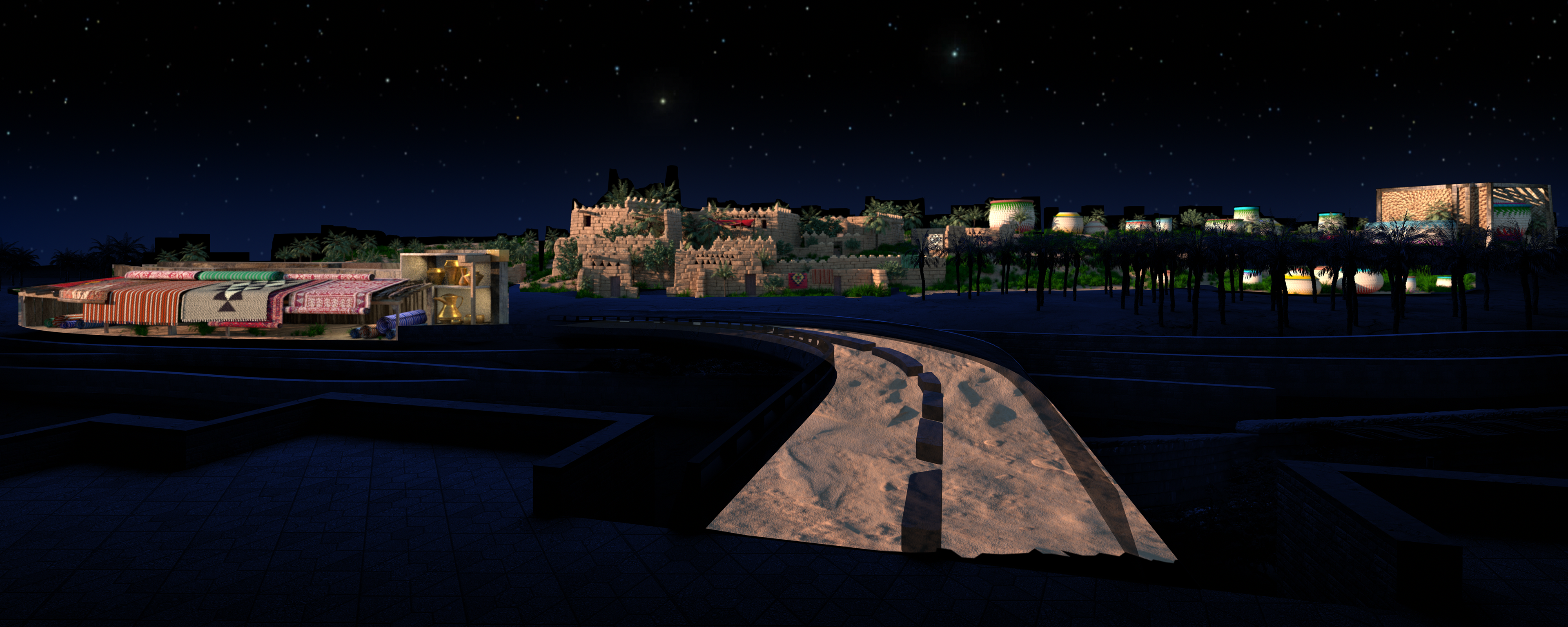
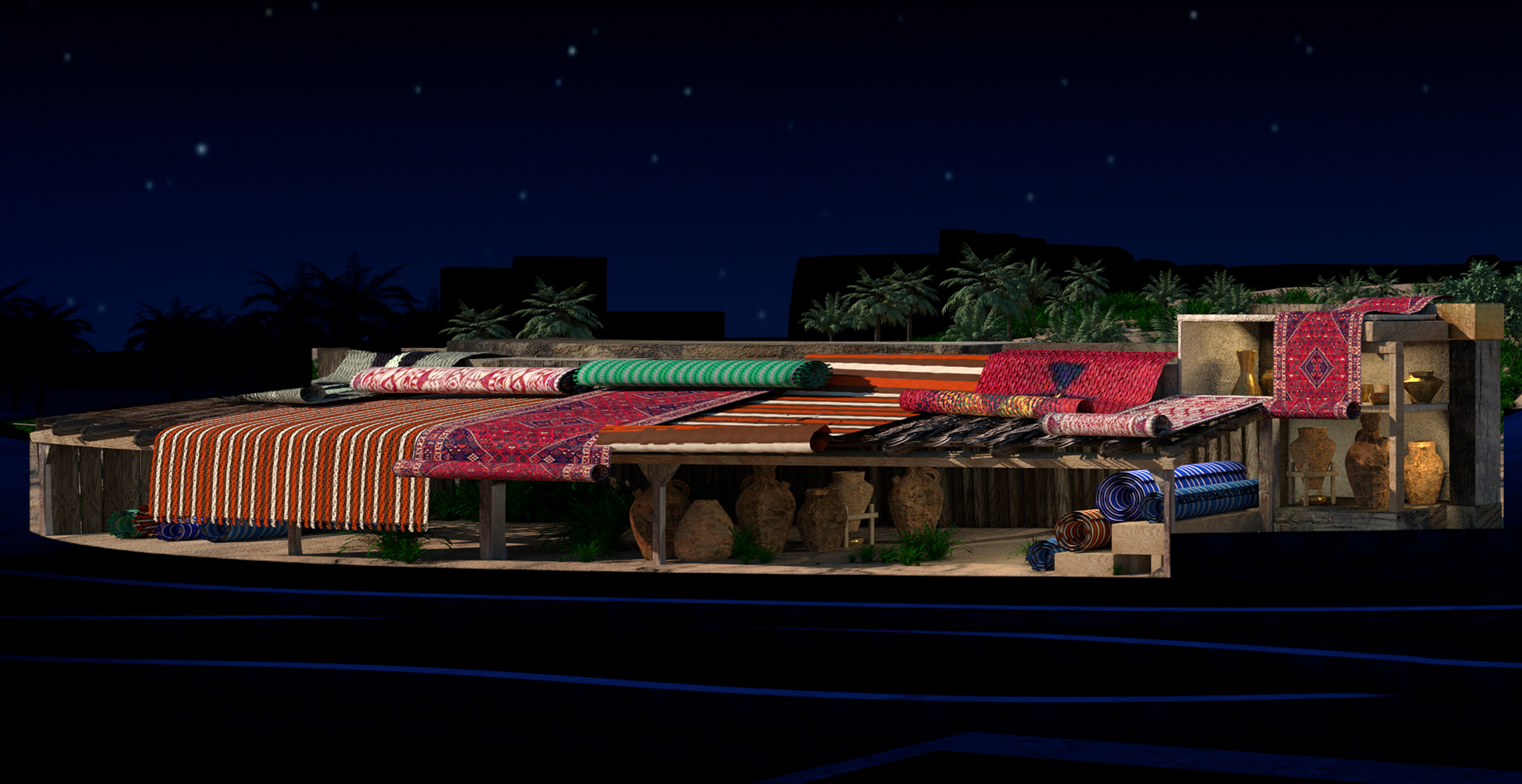
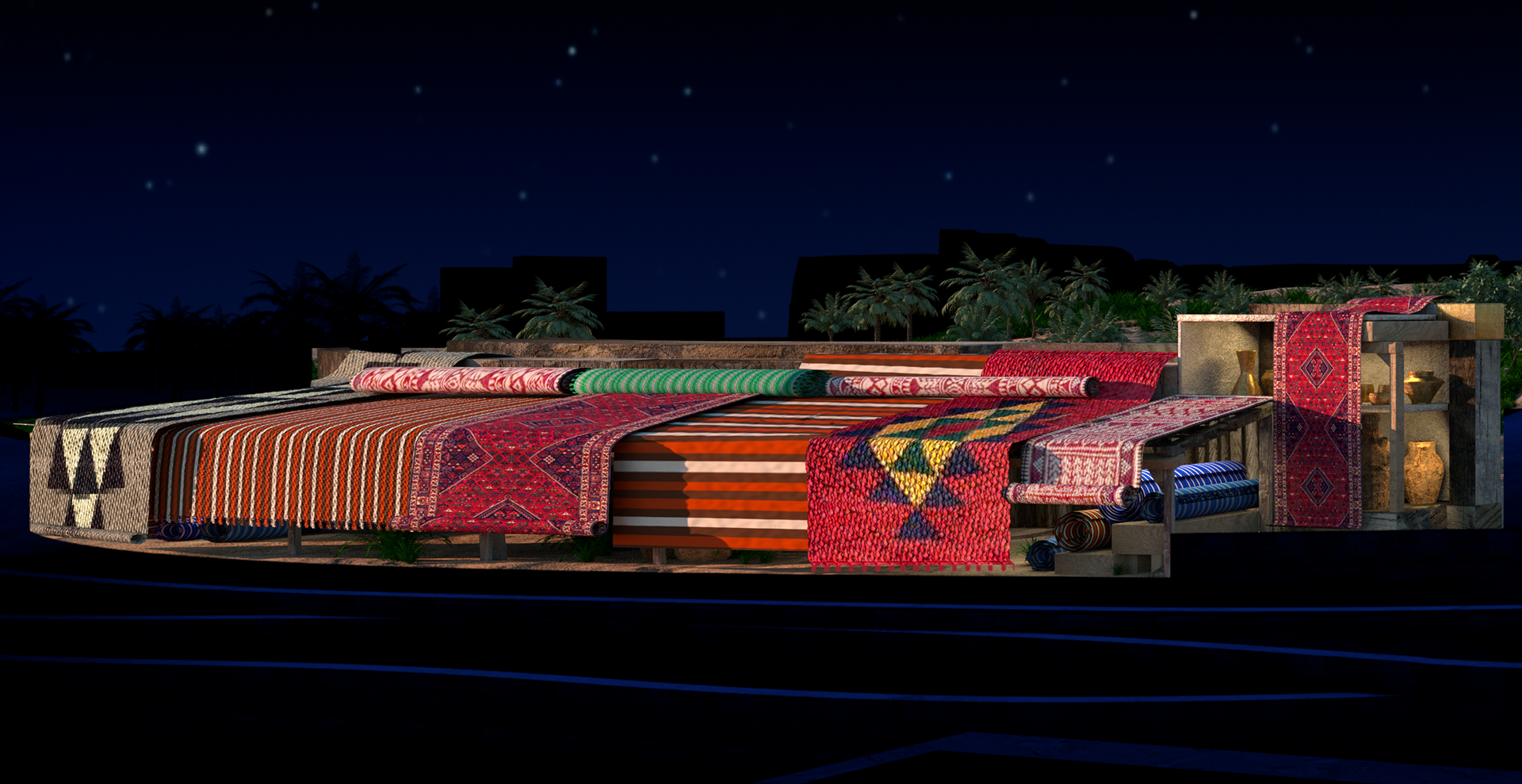
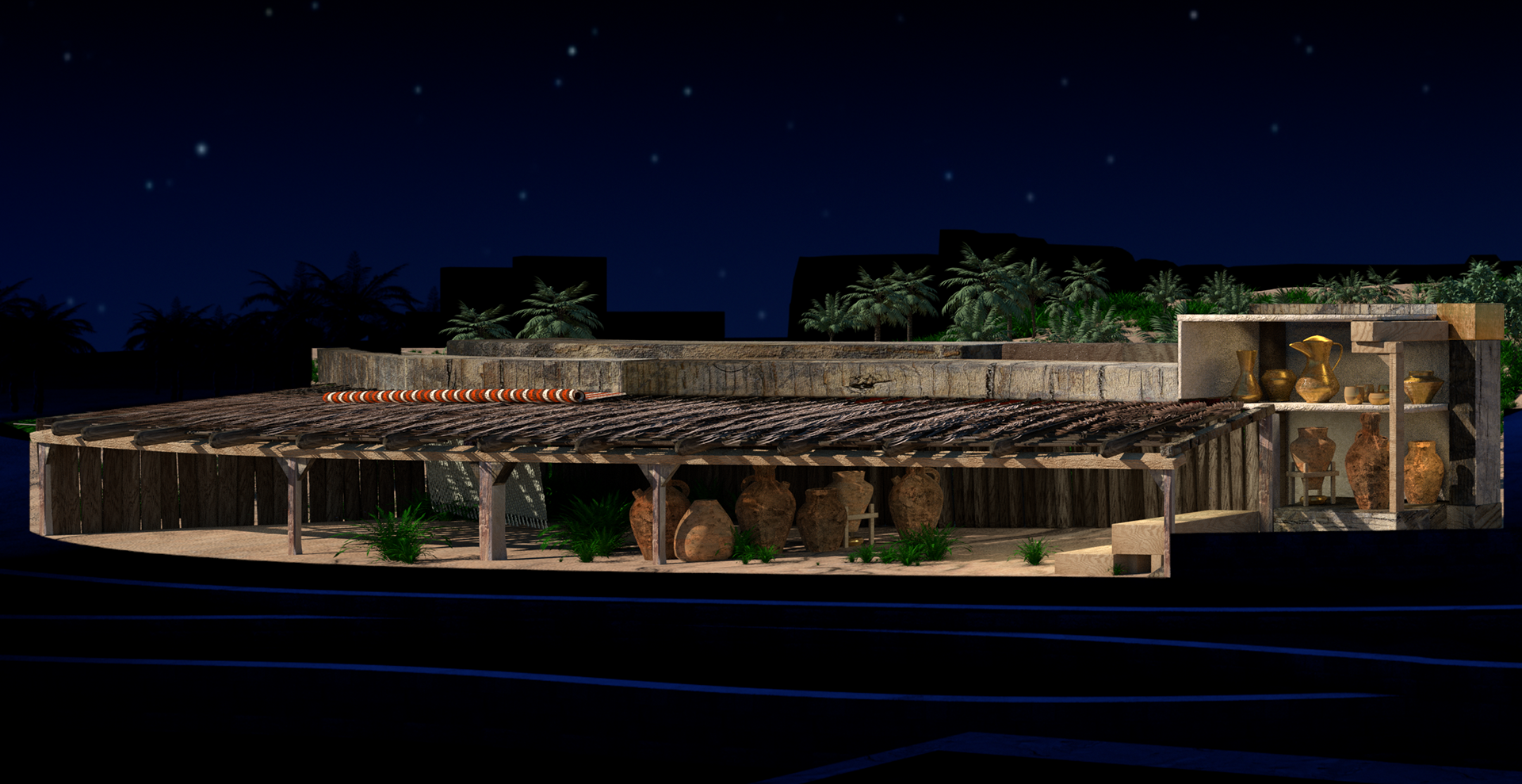
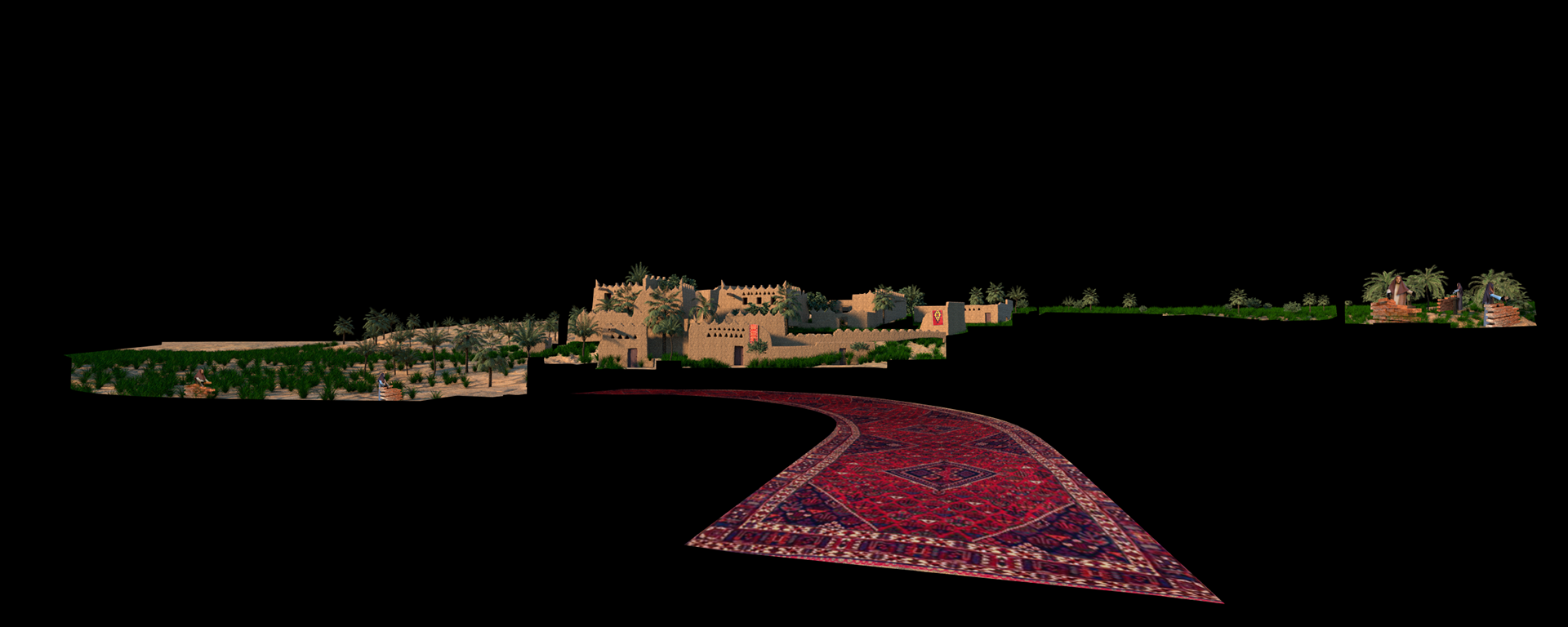
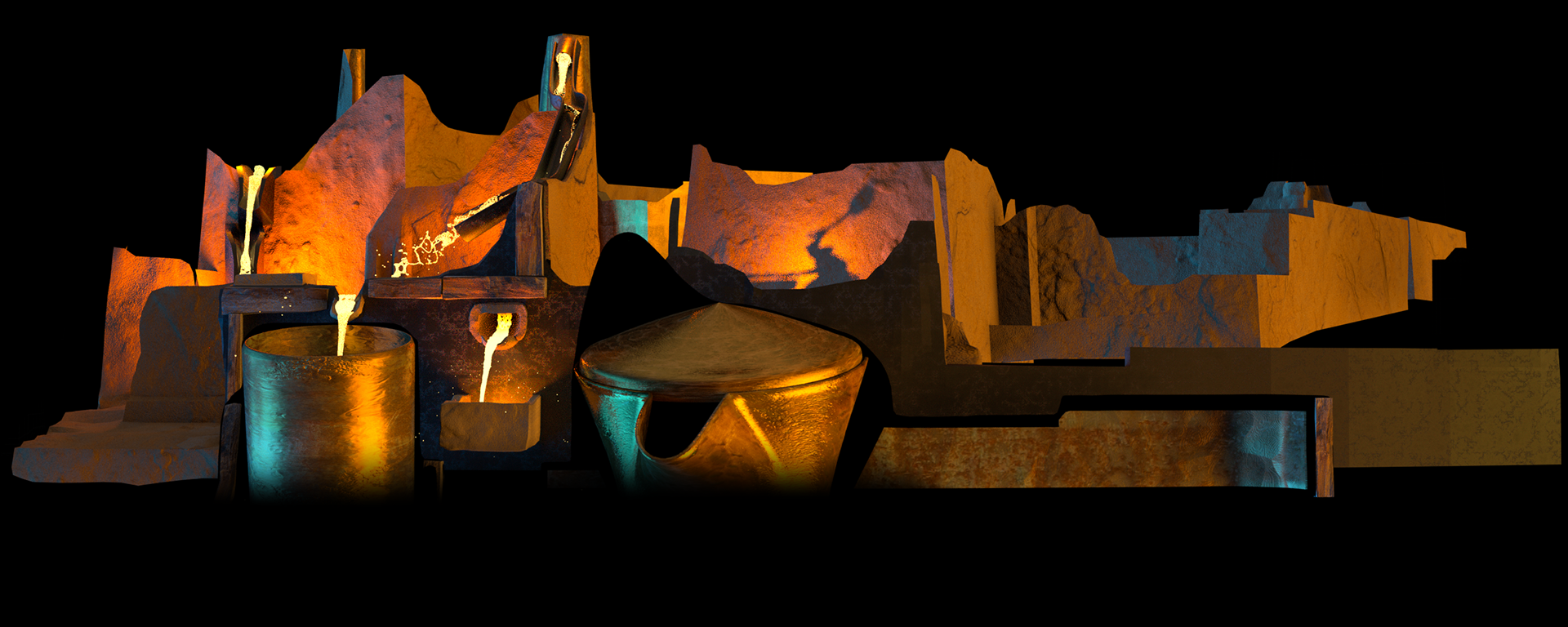
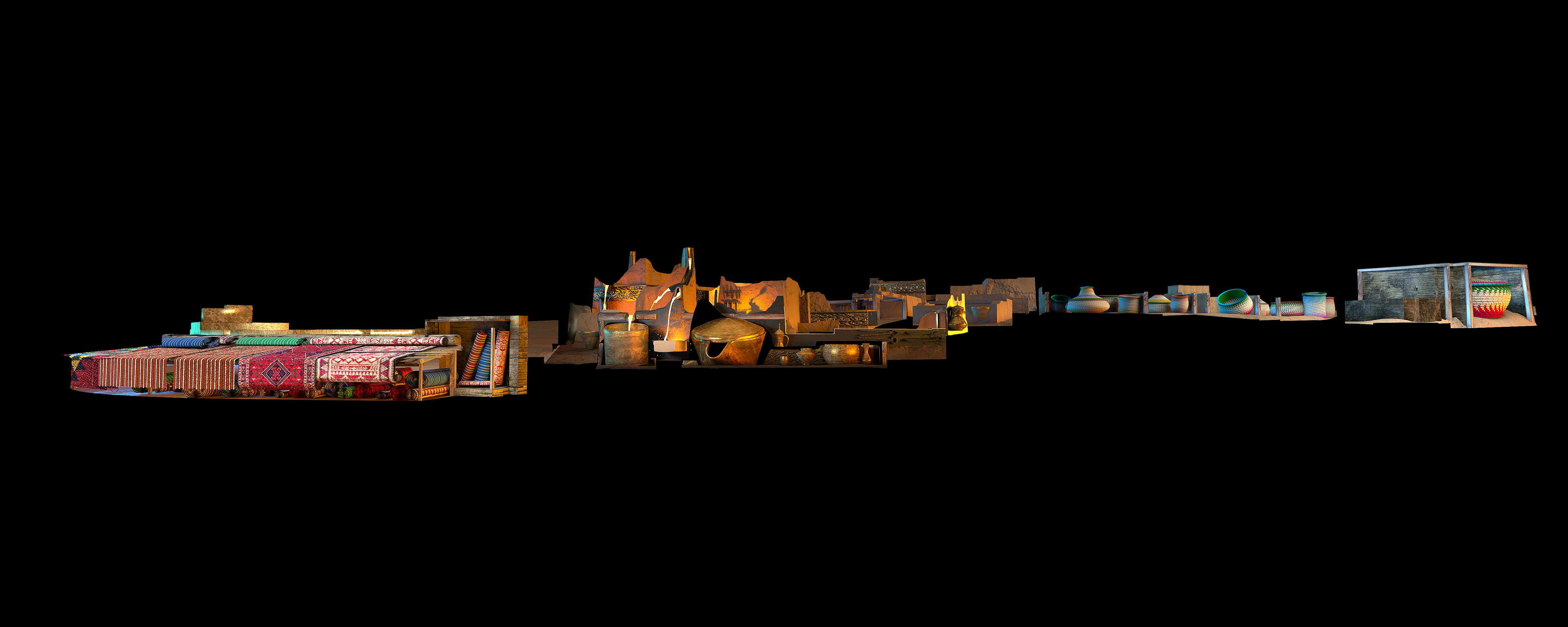
The 50' Falcon
Custom Designed Carbon Fiber Skeleton, Fabrication, Infrared Tracking, Puppeing Setup, Live Projection Mapping
Falconry is a tradition in Saudi Arabia practiced with passion and joy. So much so that UNESCO has declared falconry a living cultural heritage. No portrayal of the Saudi Kingdom could be considered authentic without showcasing its historical significance. The symbolism of the falcon was extremely important, so it had to be represented in a truly imaginative way. To fulfill the vision, a massive carbon-fiber, projection-mapped Falcon was designed and created at Xite Labs. An essential character in the storyline, the falcon was controlled by 24 performers and functioned as a giant puppet (like The Lion King). With a 50-foot wingspan, it made an awe-inspiring impression. Utilizing a Blacktrax system, the Falcon system was outfitted with 50+ stringers (Infrared beacons) and 20 IR cameras, allowing it to be tracked and projection-mapped in real-time with ultra-precision. Multiple projectors painted the bird with beautiful, real-time content as it soared on a majestic journey across the massive city walls. The falcon’s exact position on stage was then relayed back to a Disguise GX2 media server. On the Disguise server, UV-mapped, pre-produced animation content played out to multiple projectors on the Falcon, in perfect sync with the projection mapping on the walls of Diryah.
The original falcon model was produced by Greg Russell and designed by Miguel Monteagudo, and then handed off to Xite Labs’ Matt Guertin, who masterminded the trellis structure of the bird, the puppet pole functionality, the wing rotation mechanism, BlackTrax stringer installation, and more. All fabrication was completed in the Xite Labs workshop, where costumes wrapped the giant bird in Lycra that ultimately acted as the projection surface. The finished design incorporated thousands of interlinks parts and weighed roughly 420 pounds. Fun Fact: a special perch had to be produced for the bird to provide a nesting place when it was not in rehearsals.
*Text extracted from Xitelabs.com
3D MODELING VISUALIZATION
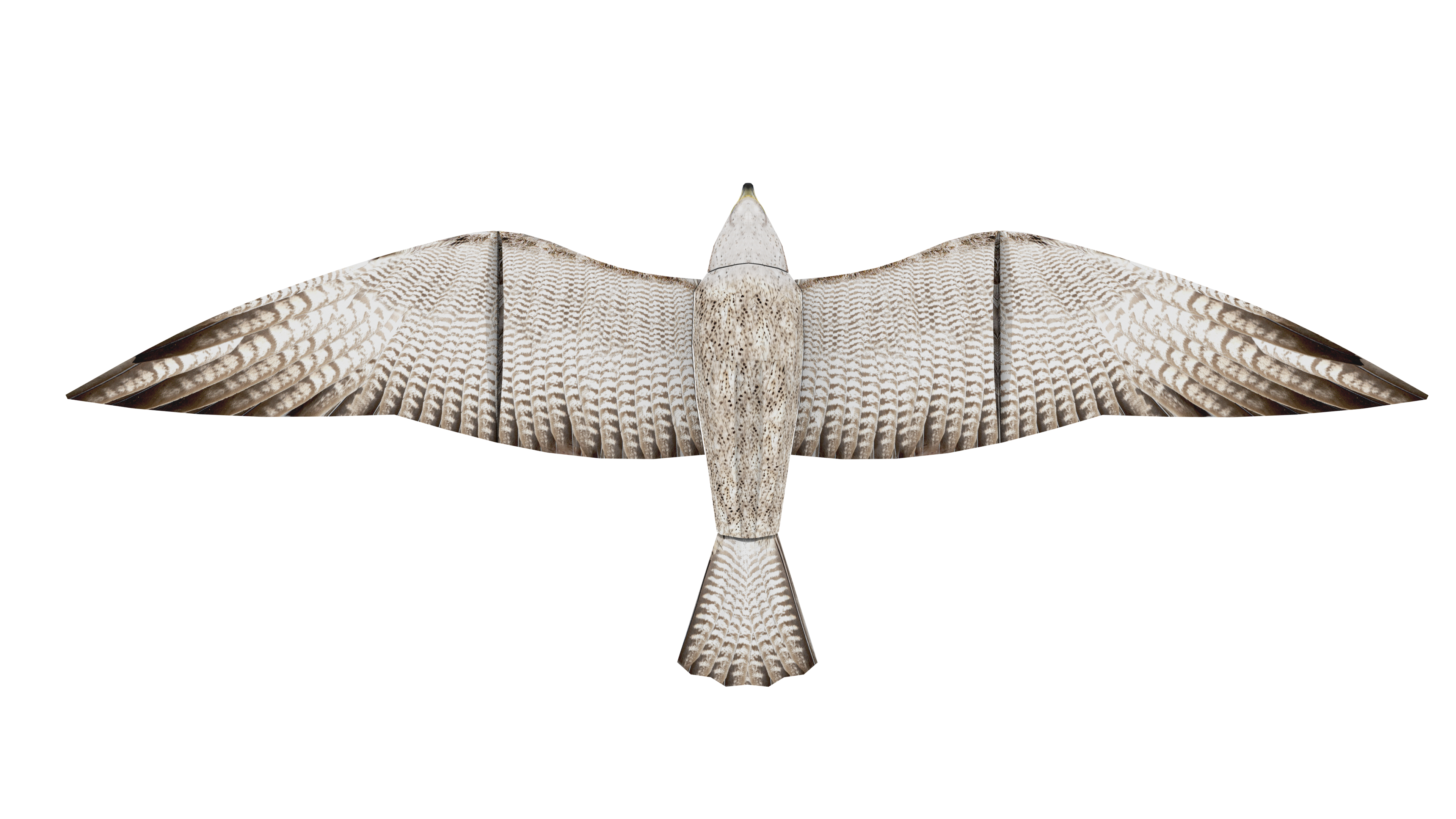
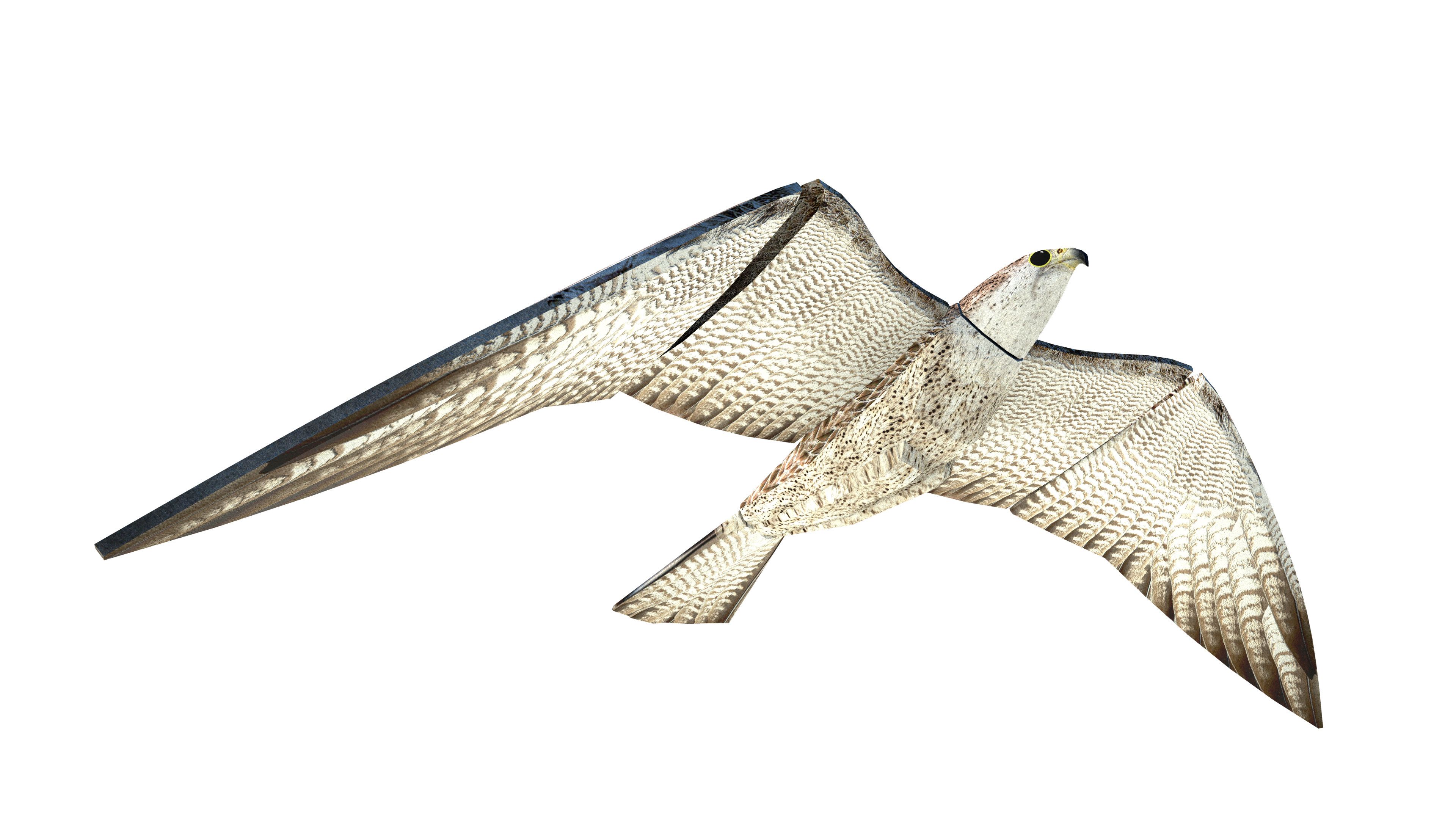
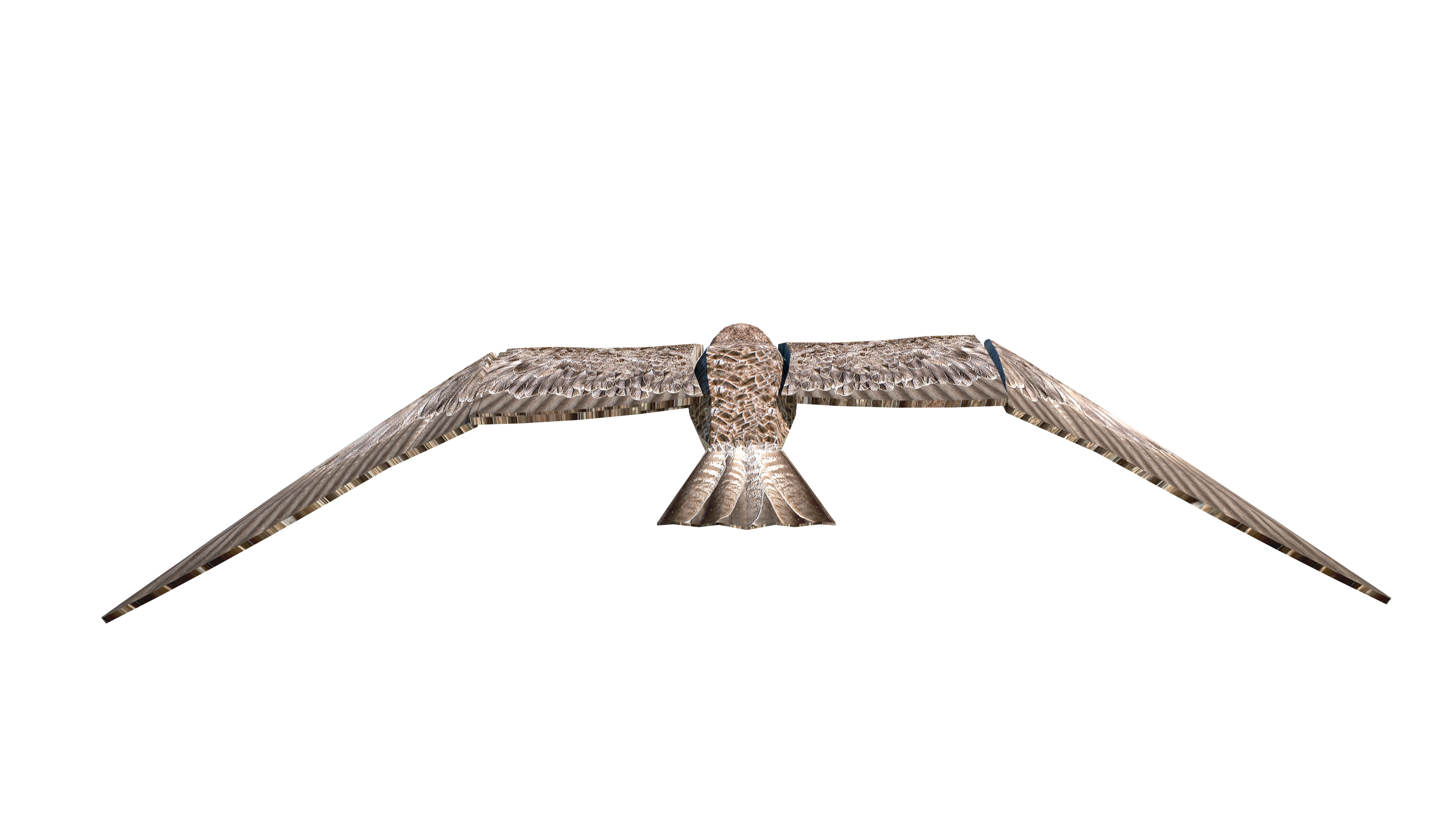
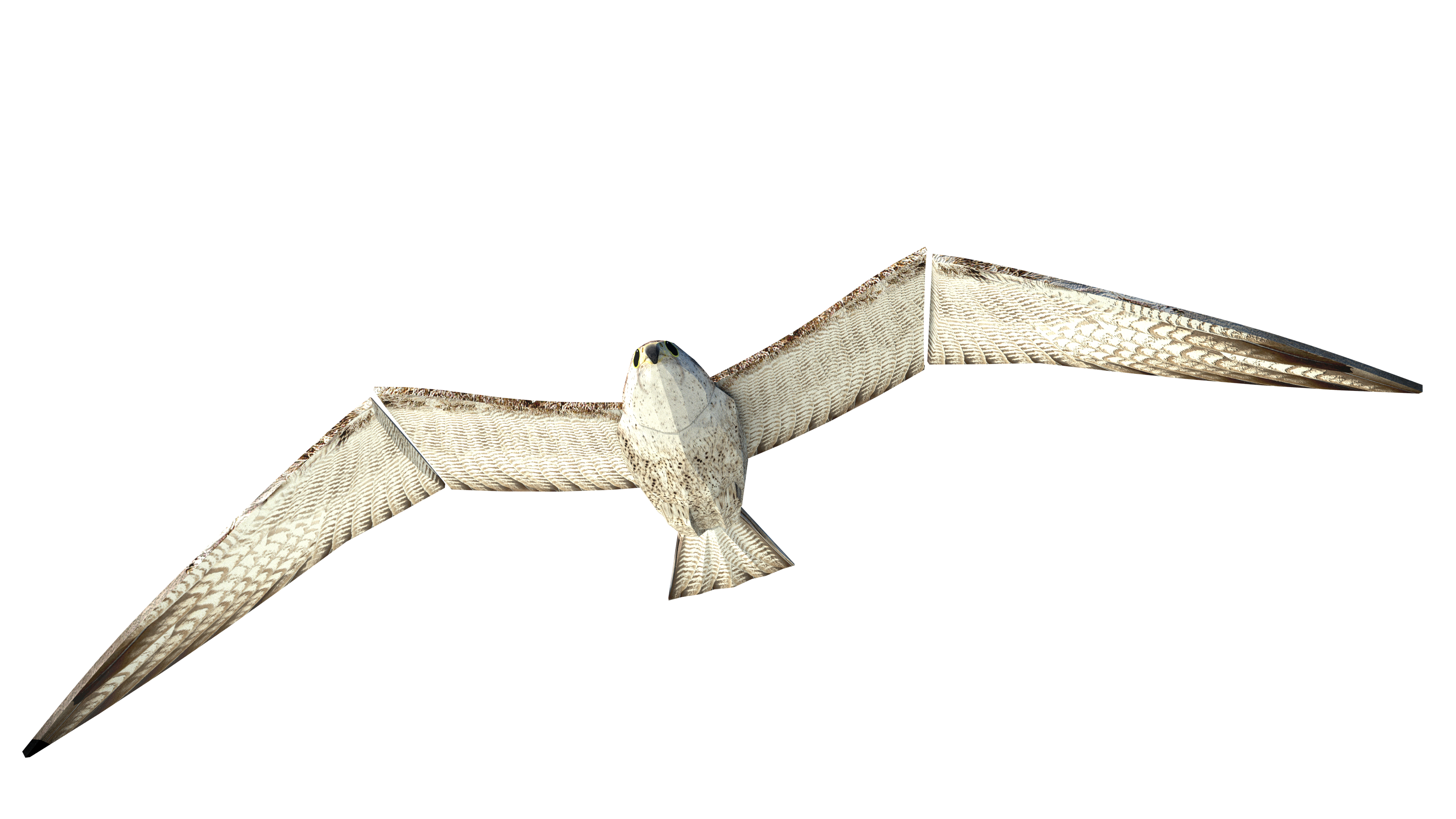
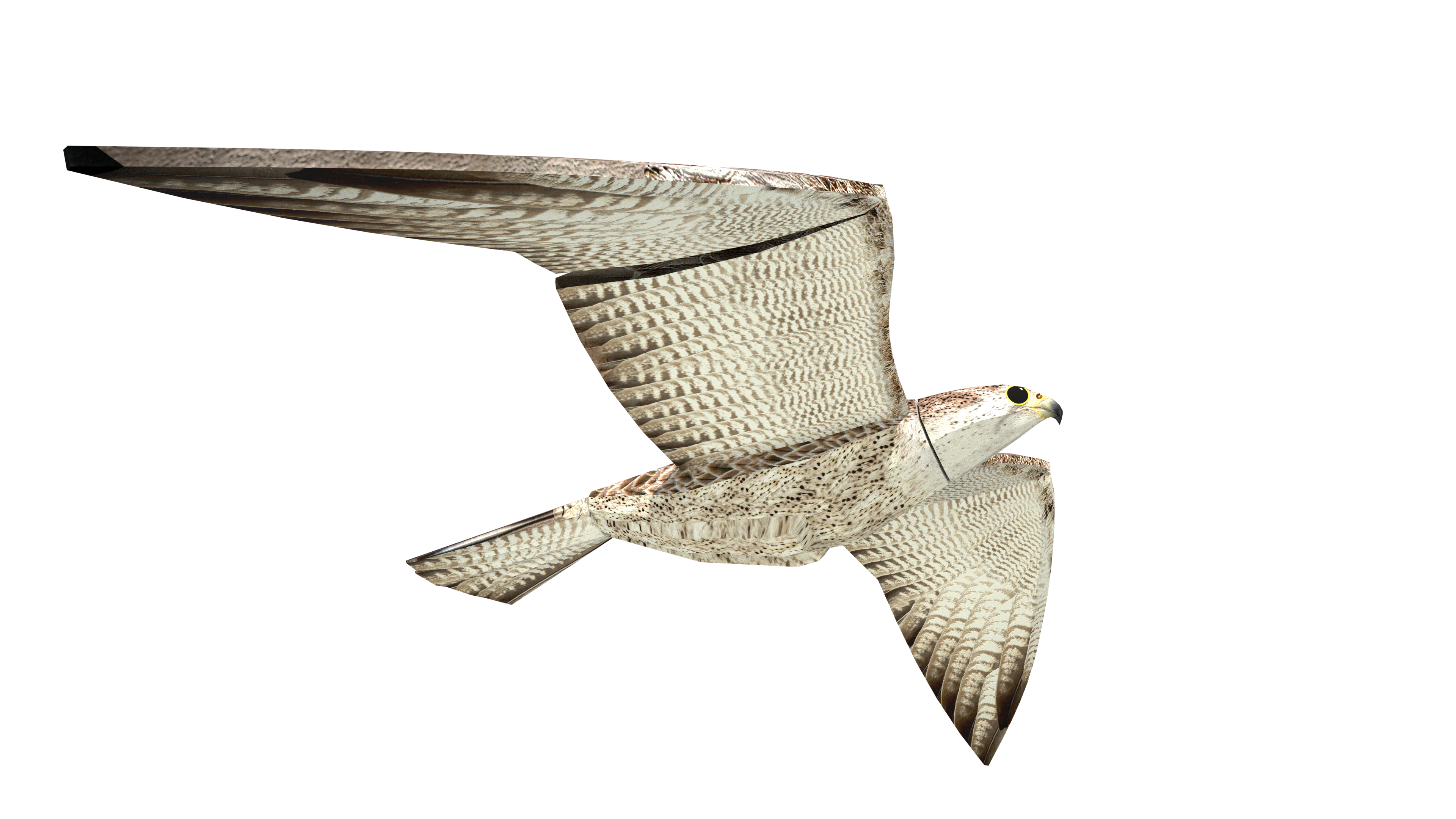
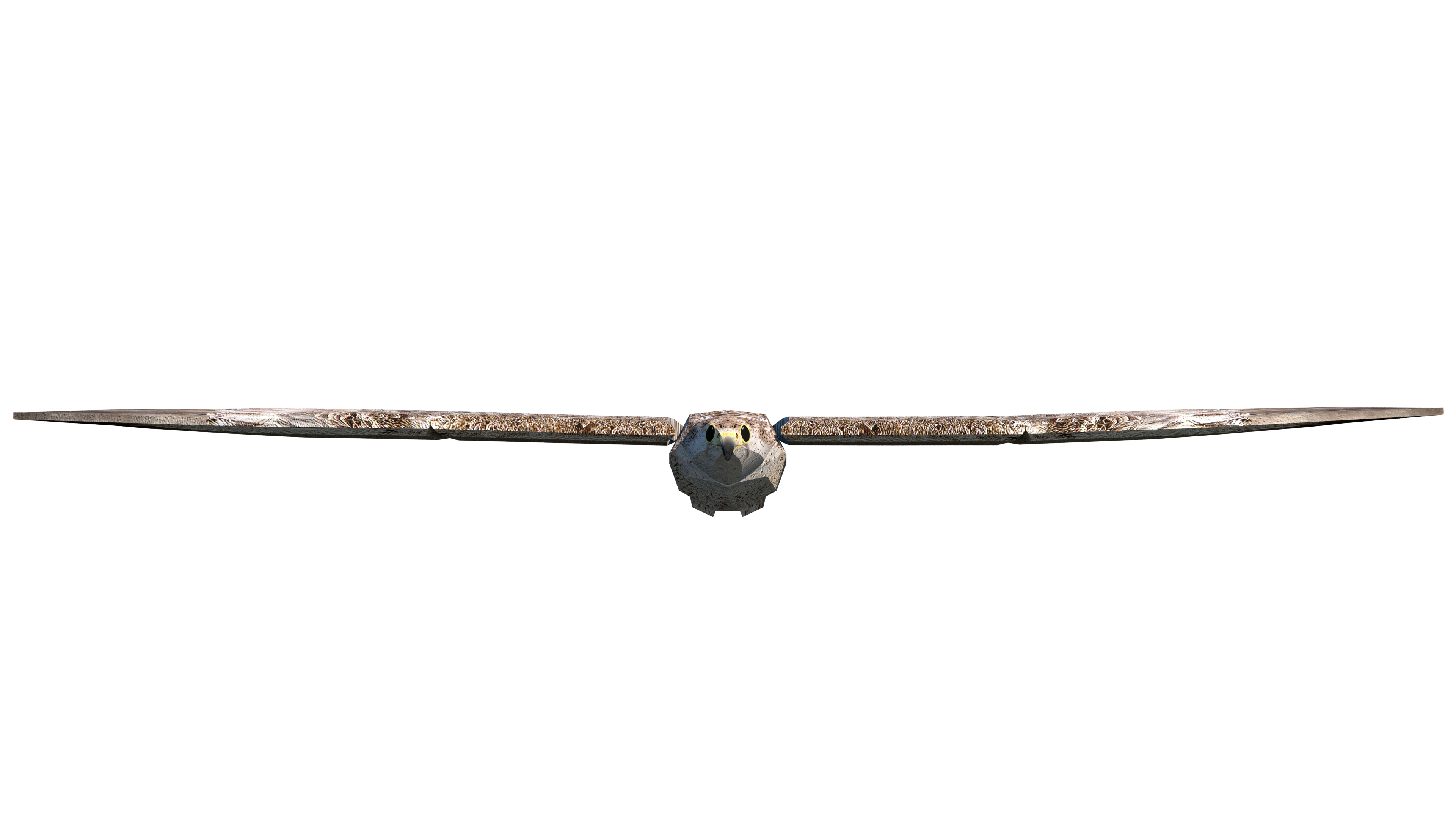
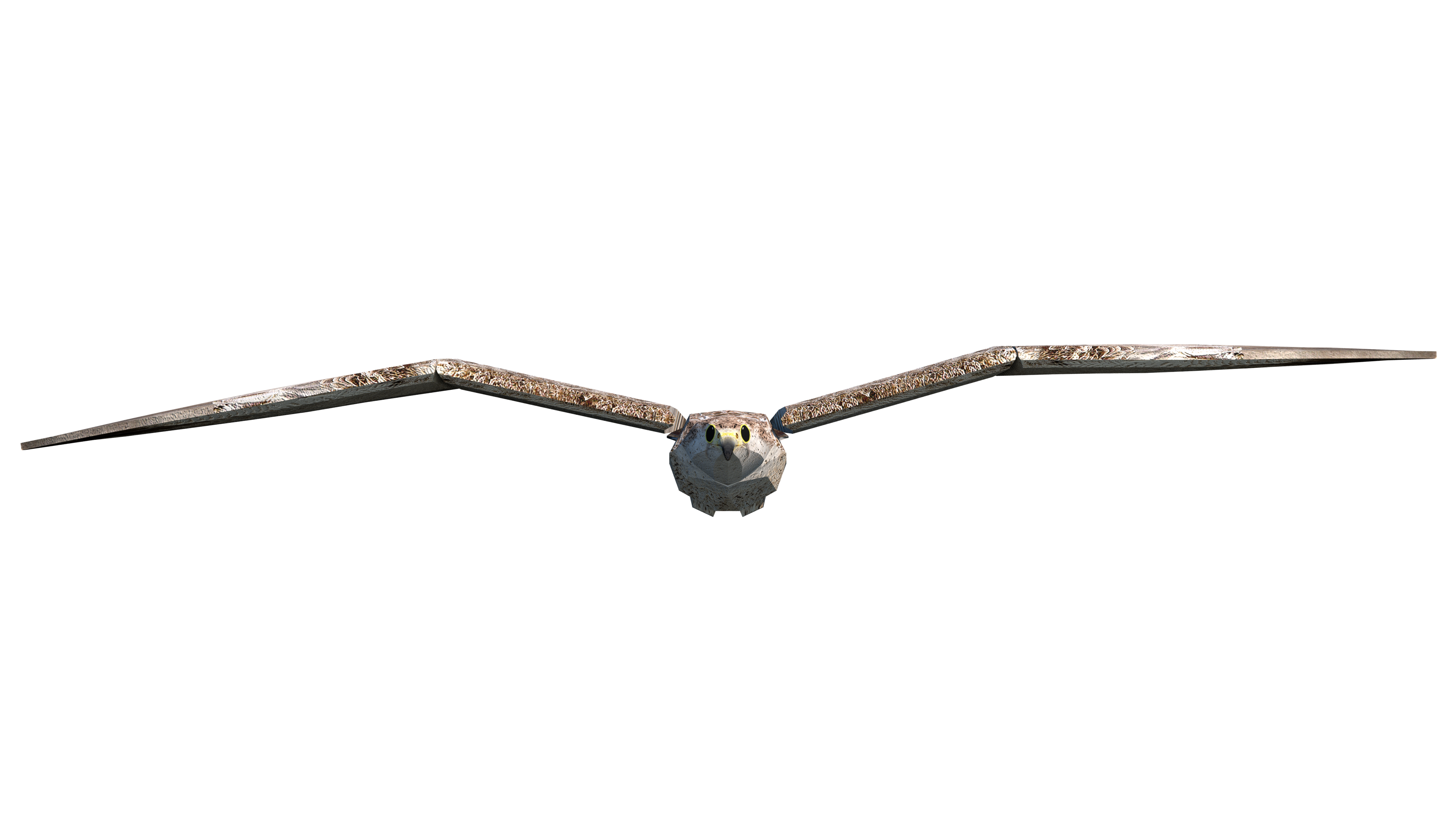
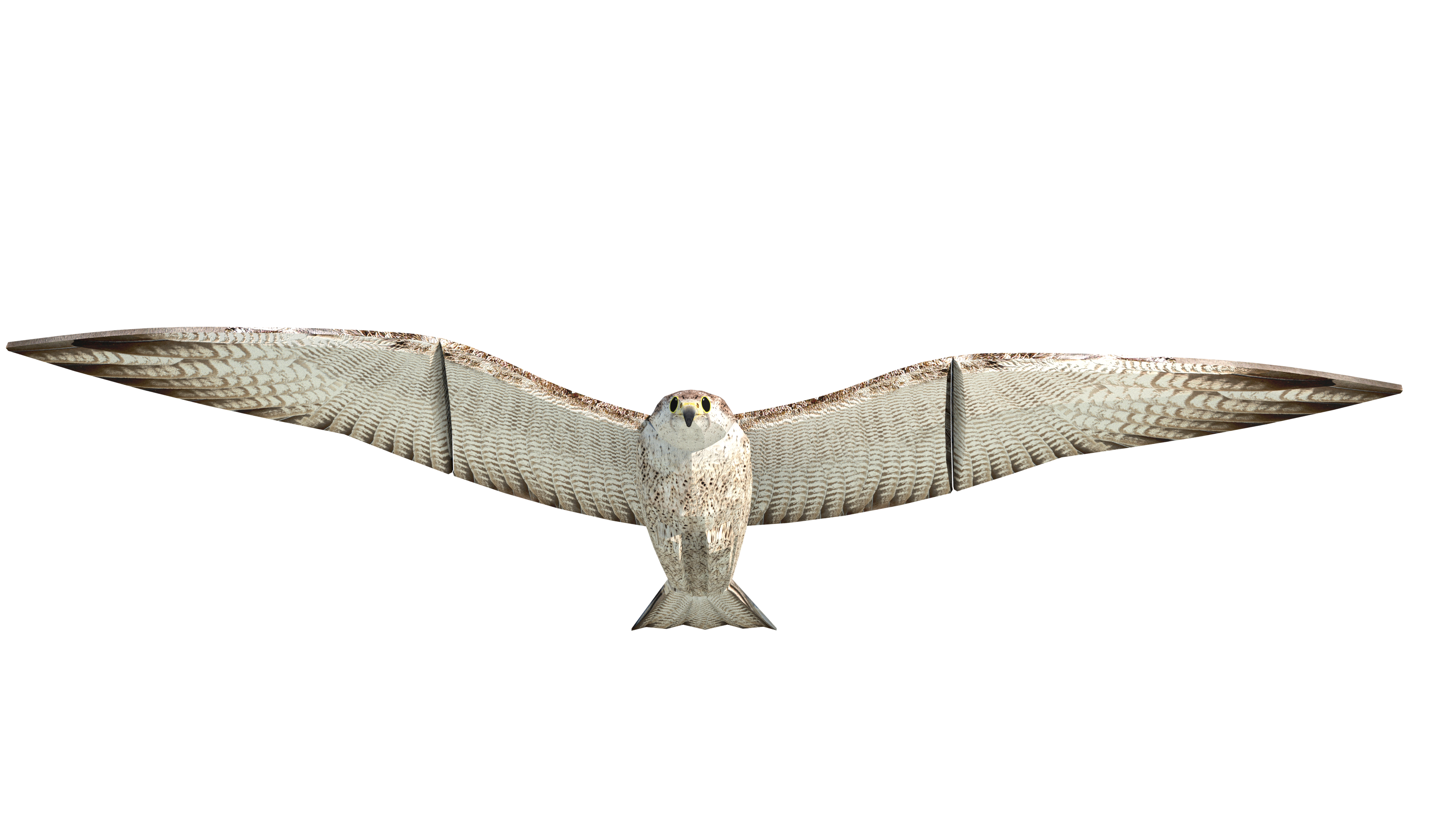

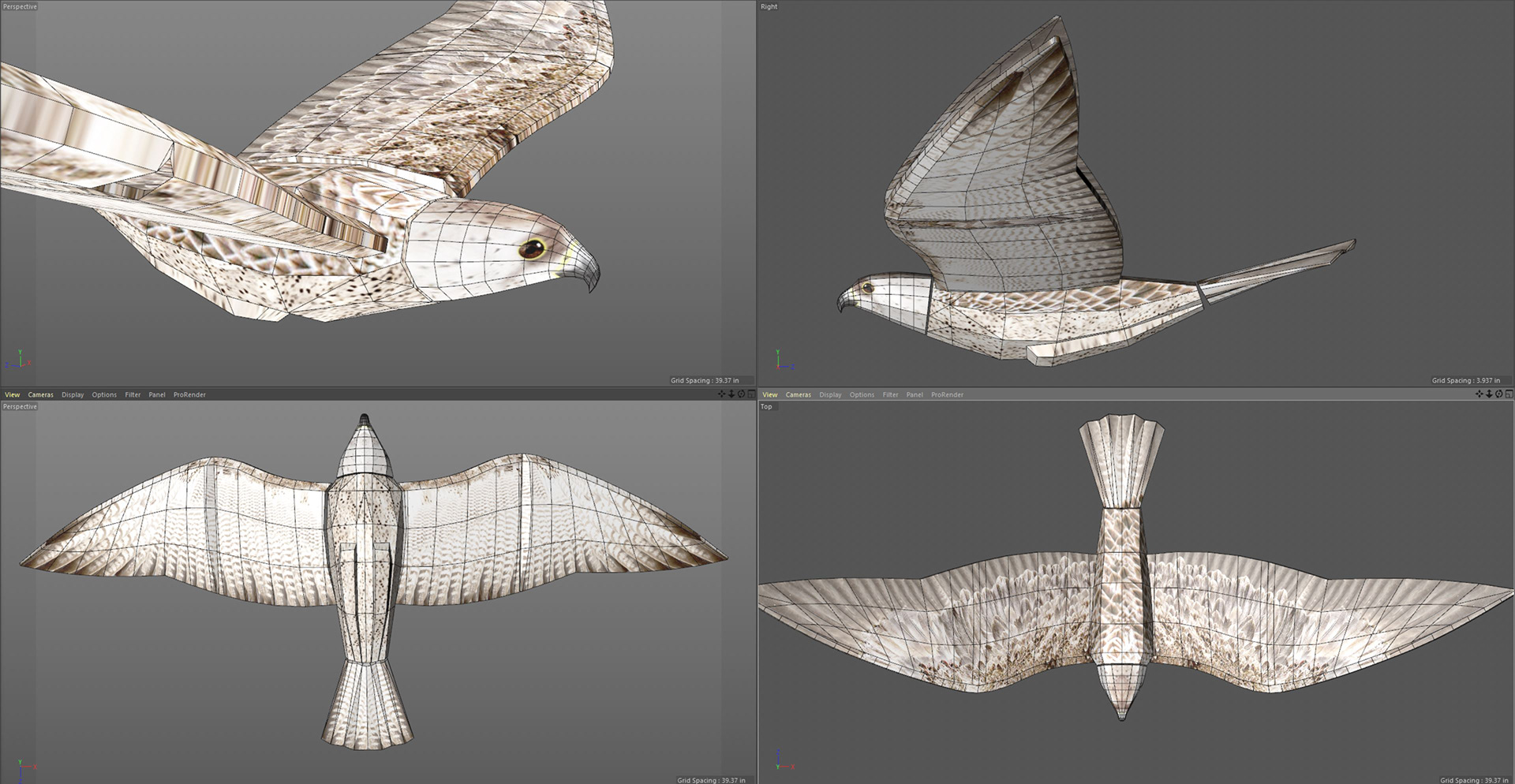
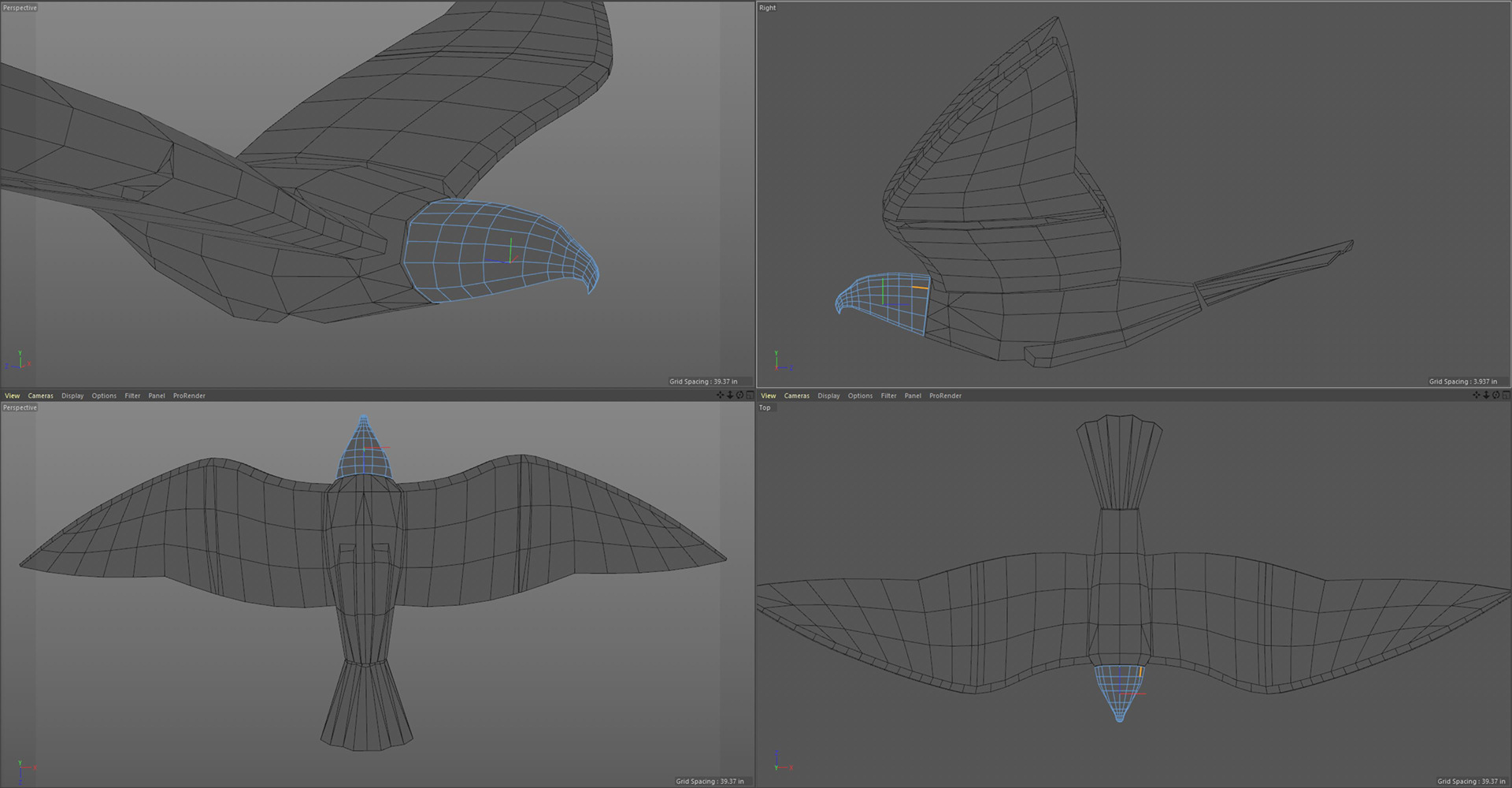
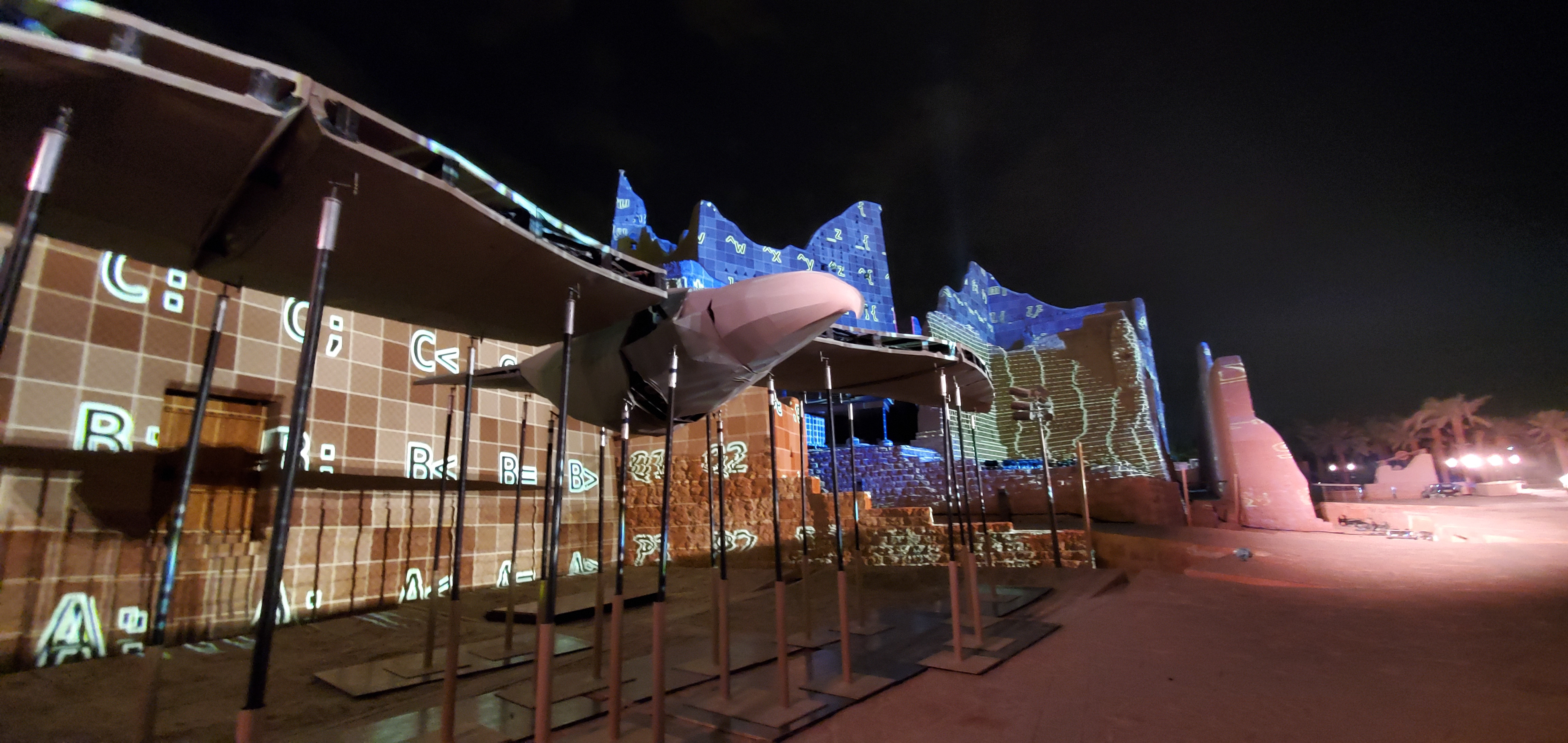
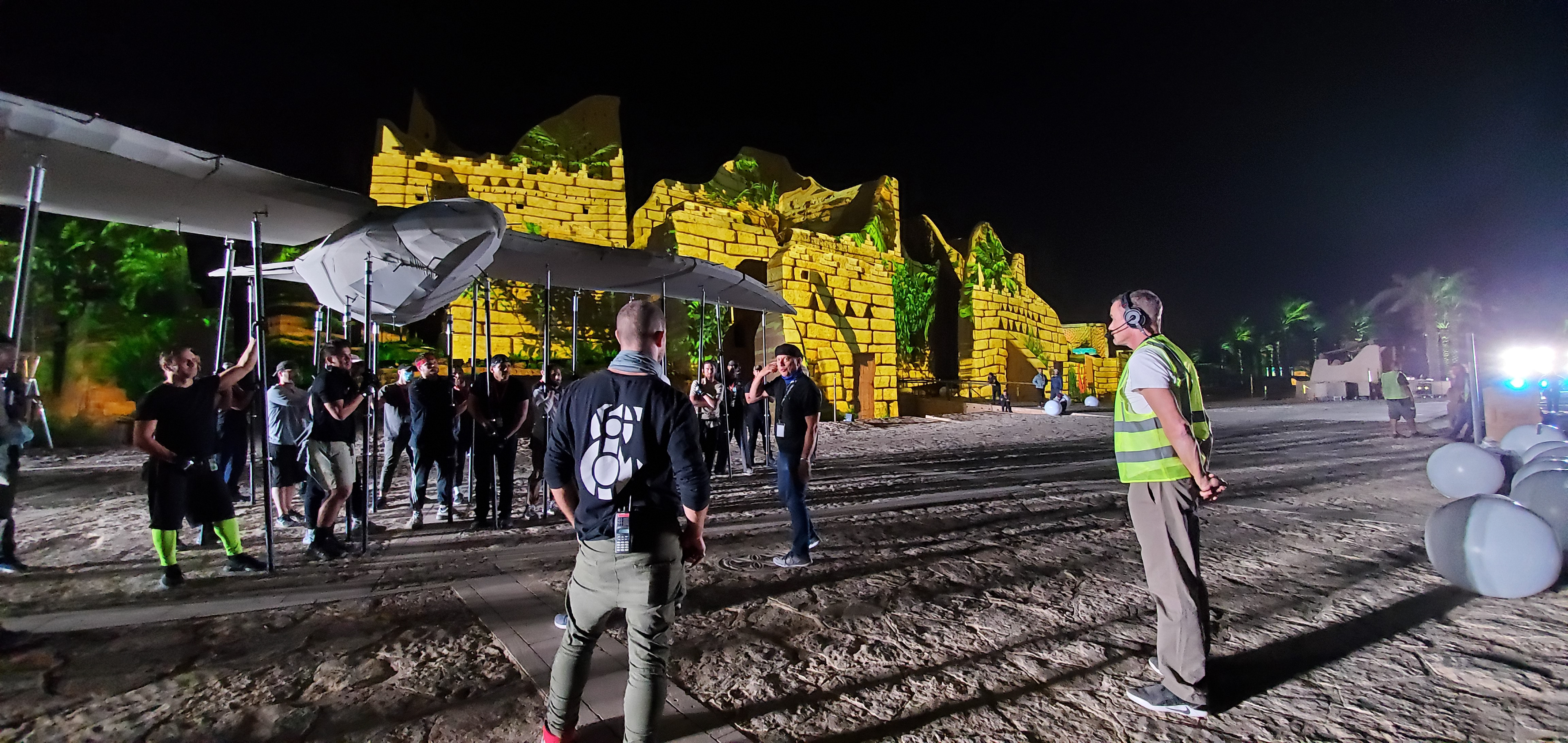
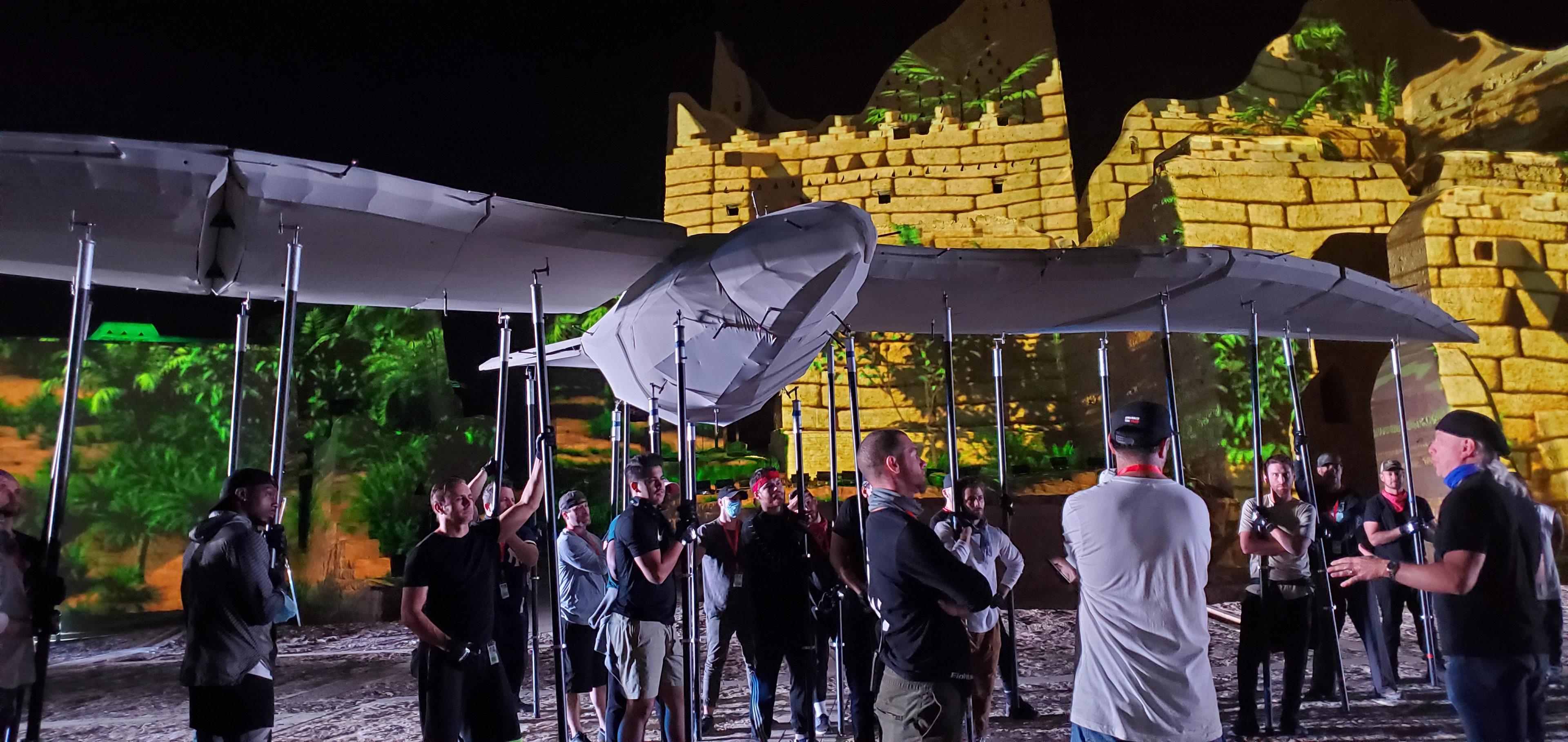
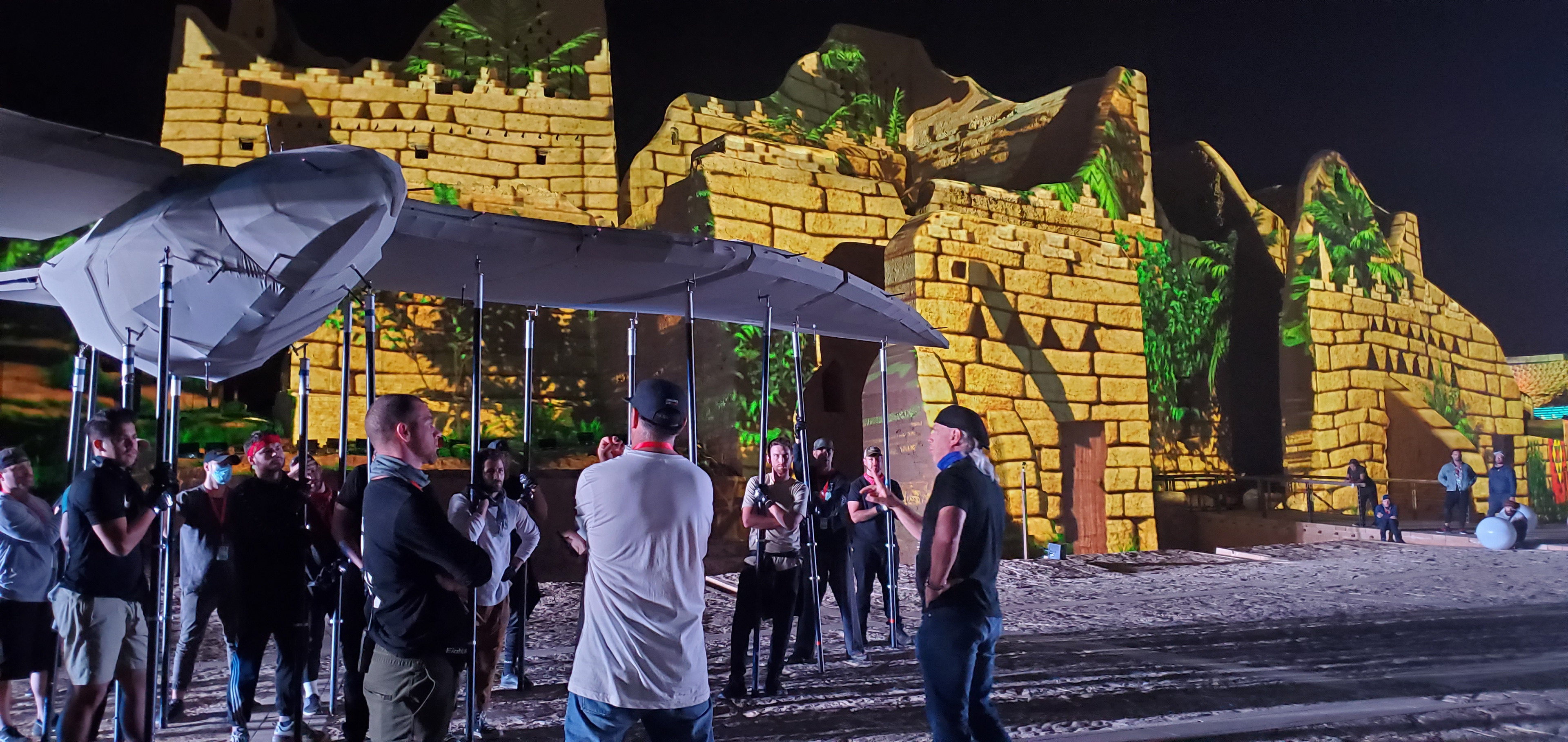
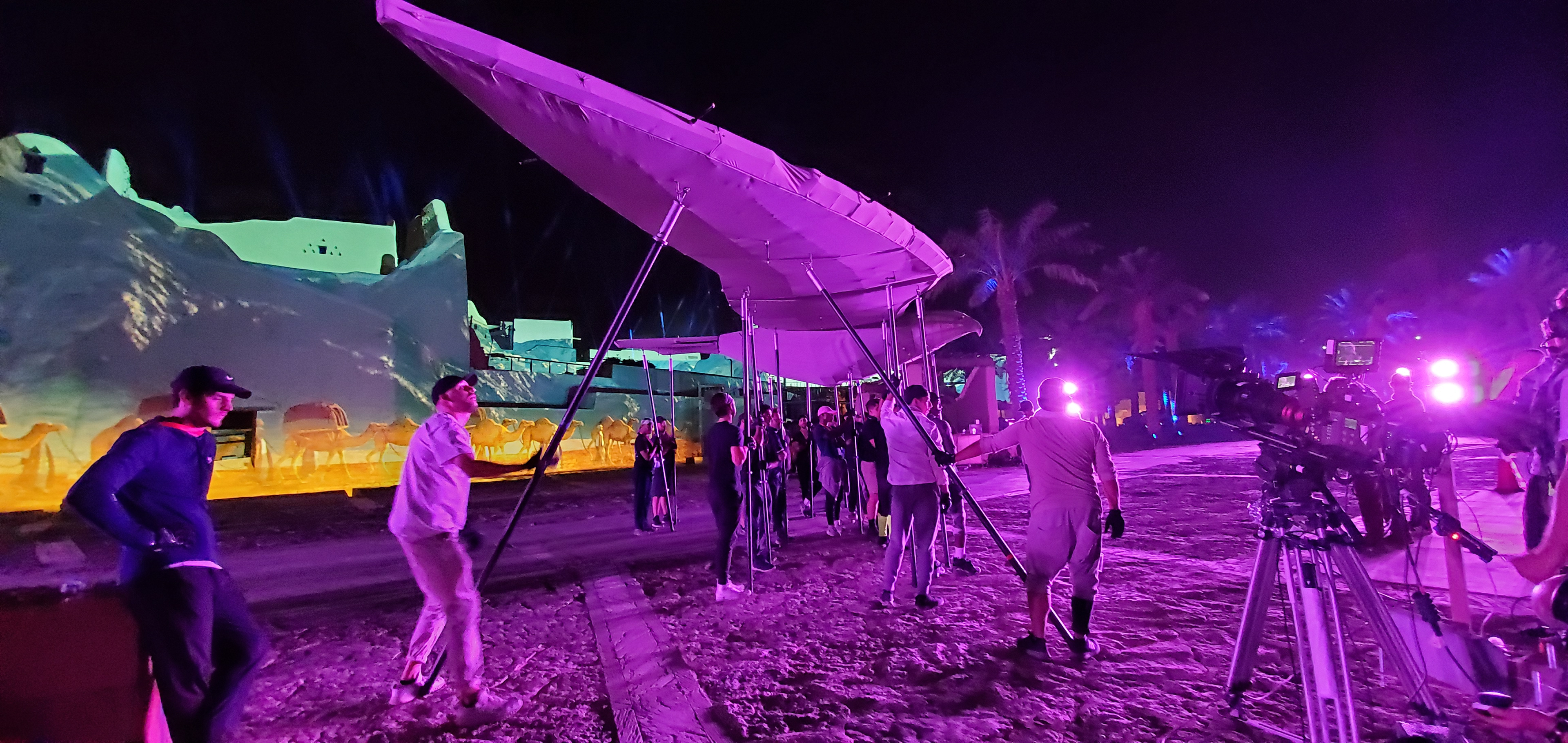
ANIMATION DETAILS
The content was delivered via 200+ projectors and 3D projection mapping on the myriad shapes of Diriyah’s mud walls, with an image spanning three football fields in length. The intricate structures were pixel-mapped, edge to edge, top to bottom, yielding a projection surface with 225,815,040 pixels per frame of video. The model used to develop the projection surface contained 65,000,000 polygons in the mesh, which was produced using a combination of drones and lidar scanning techniques.
In the end, the location was painted with a striking display of cinematic projection mapping to tell the visual story of the kingdom’s history. Nearly 7 billion pixels of content per second were projected, eclipsing 8 trillion pixels total for the show.
*Text extracted from Xitelabs.com
STILL FRAMES AND PROCESS
